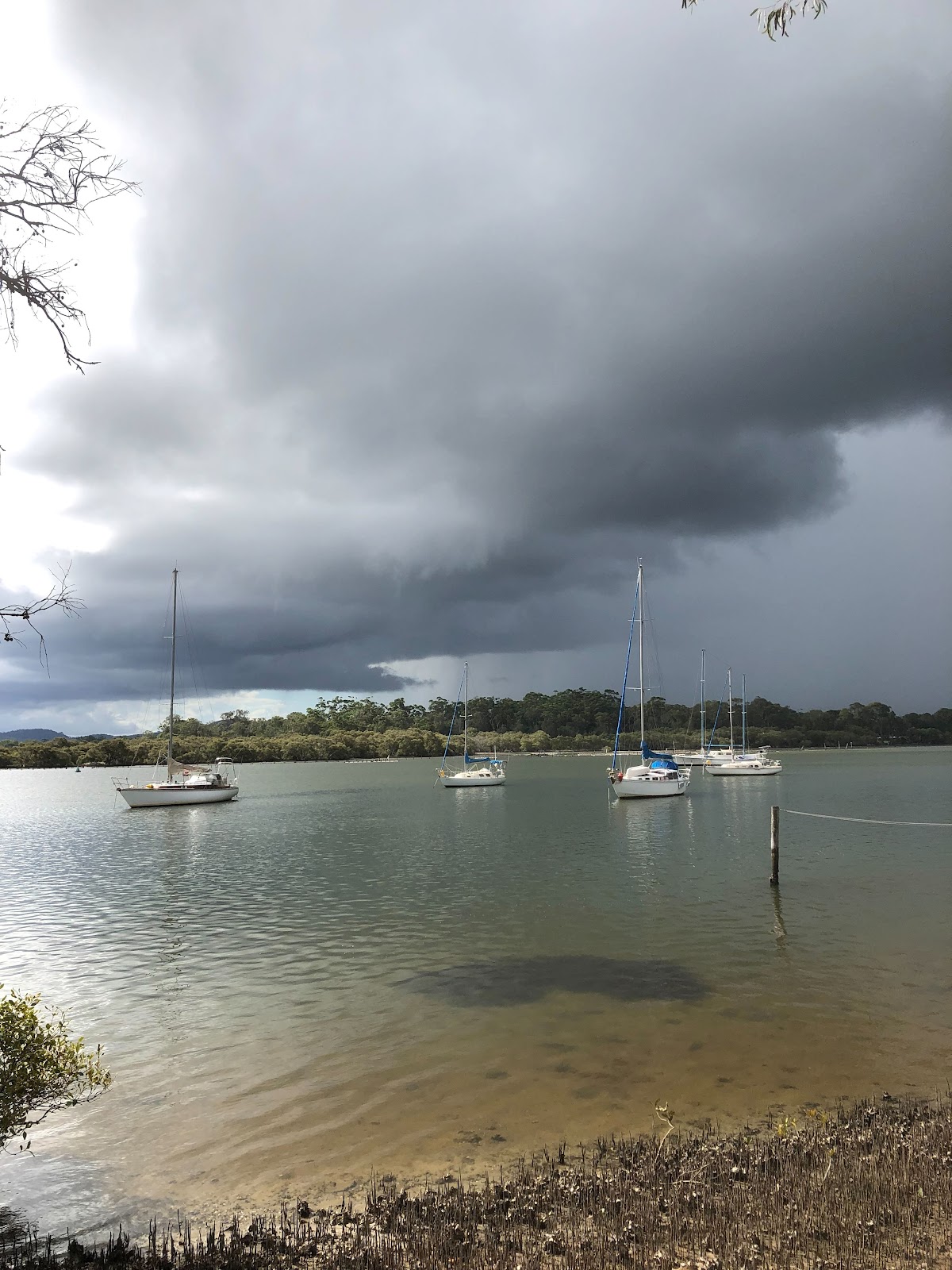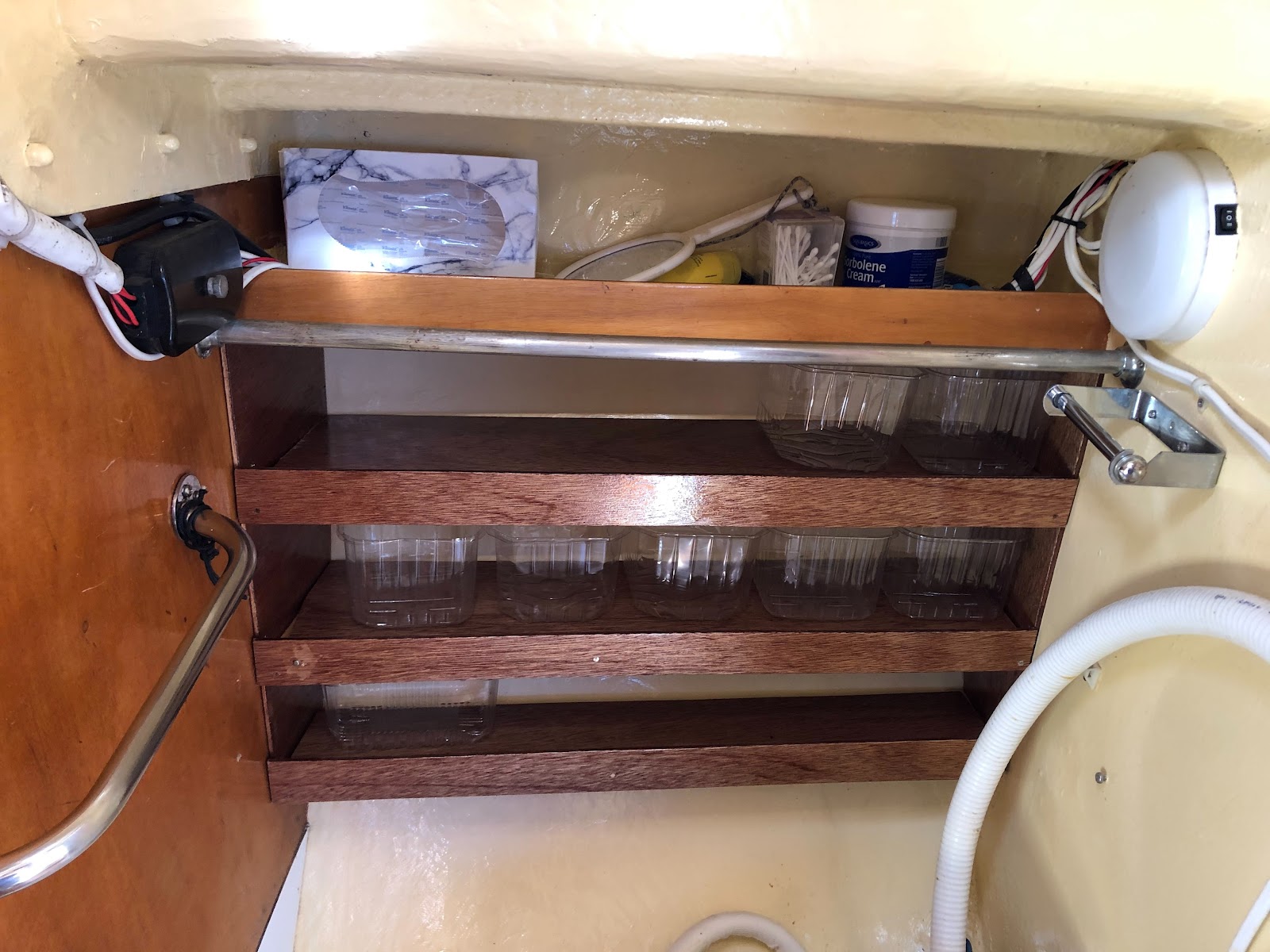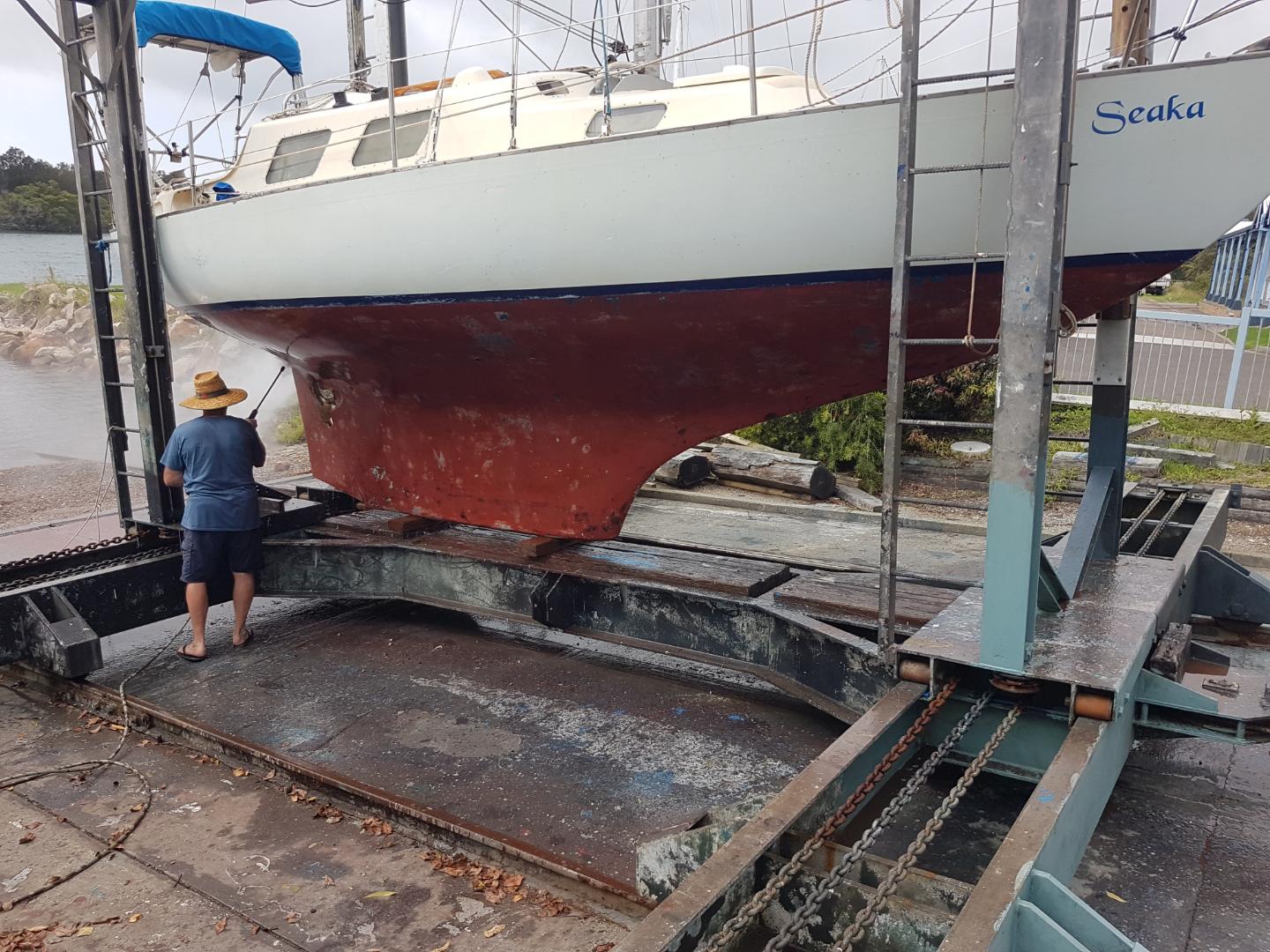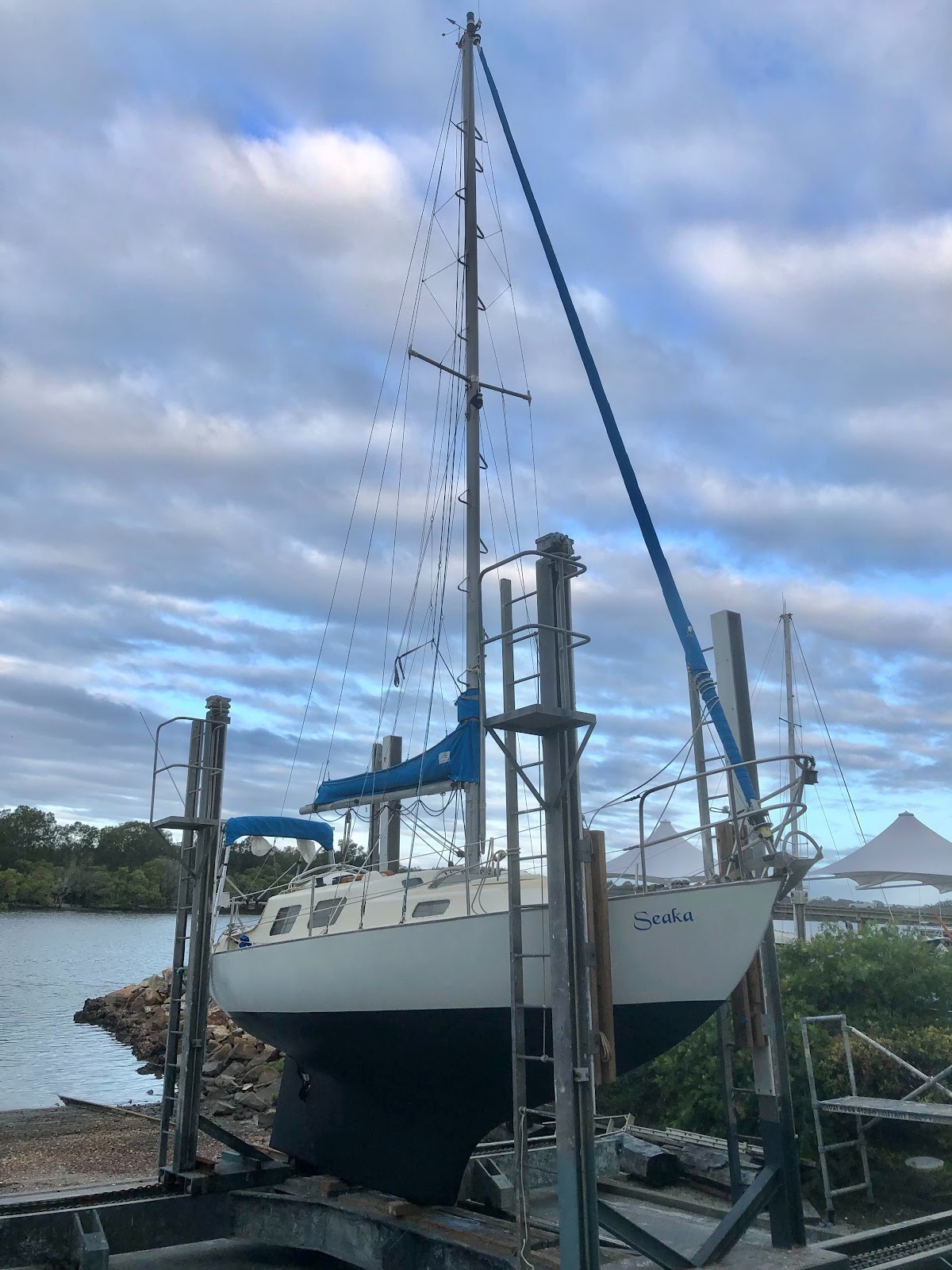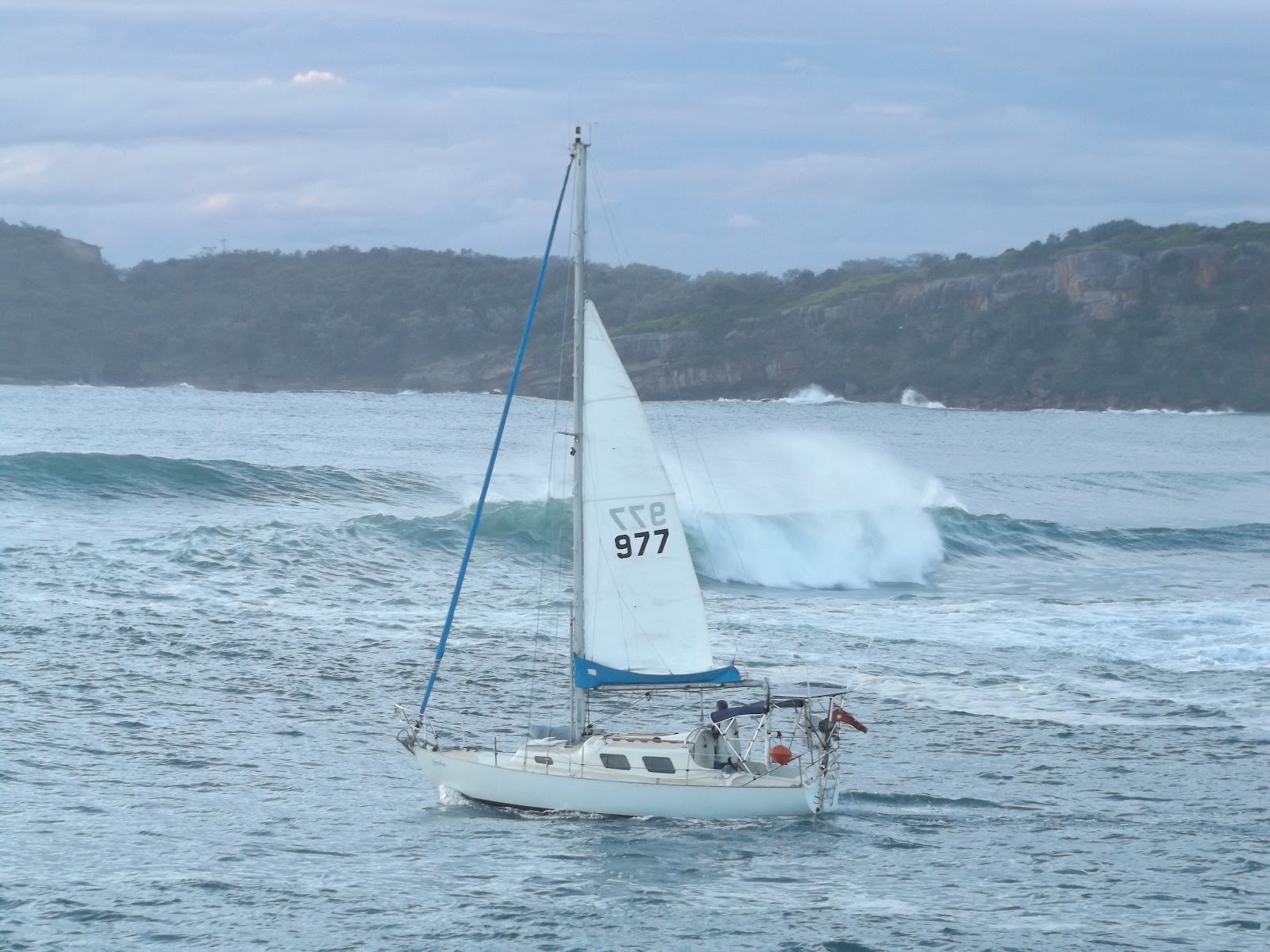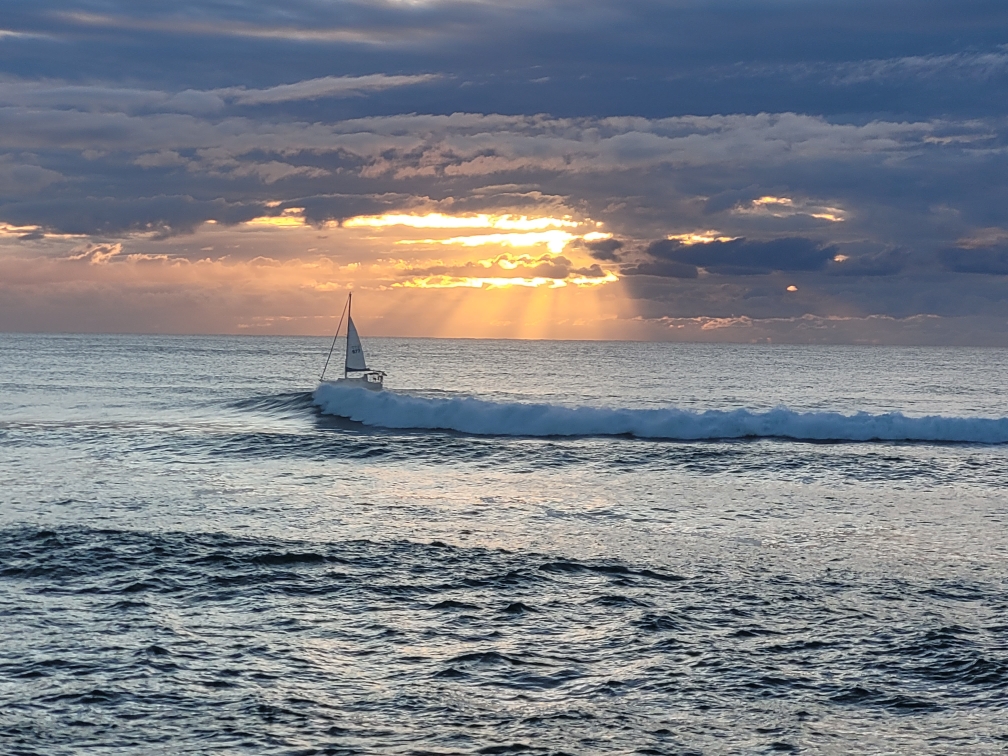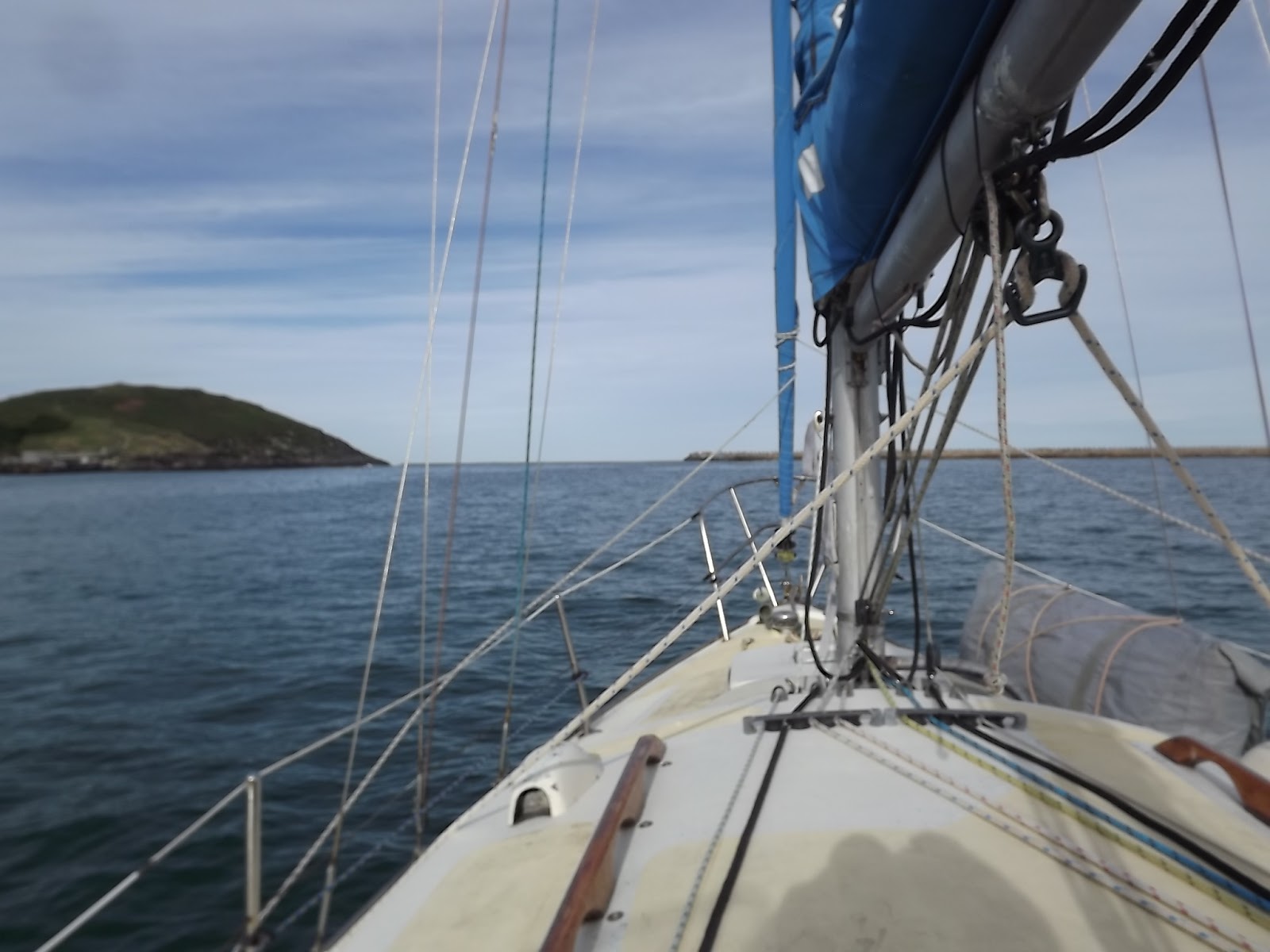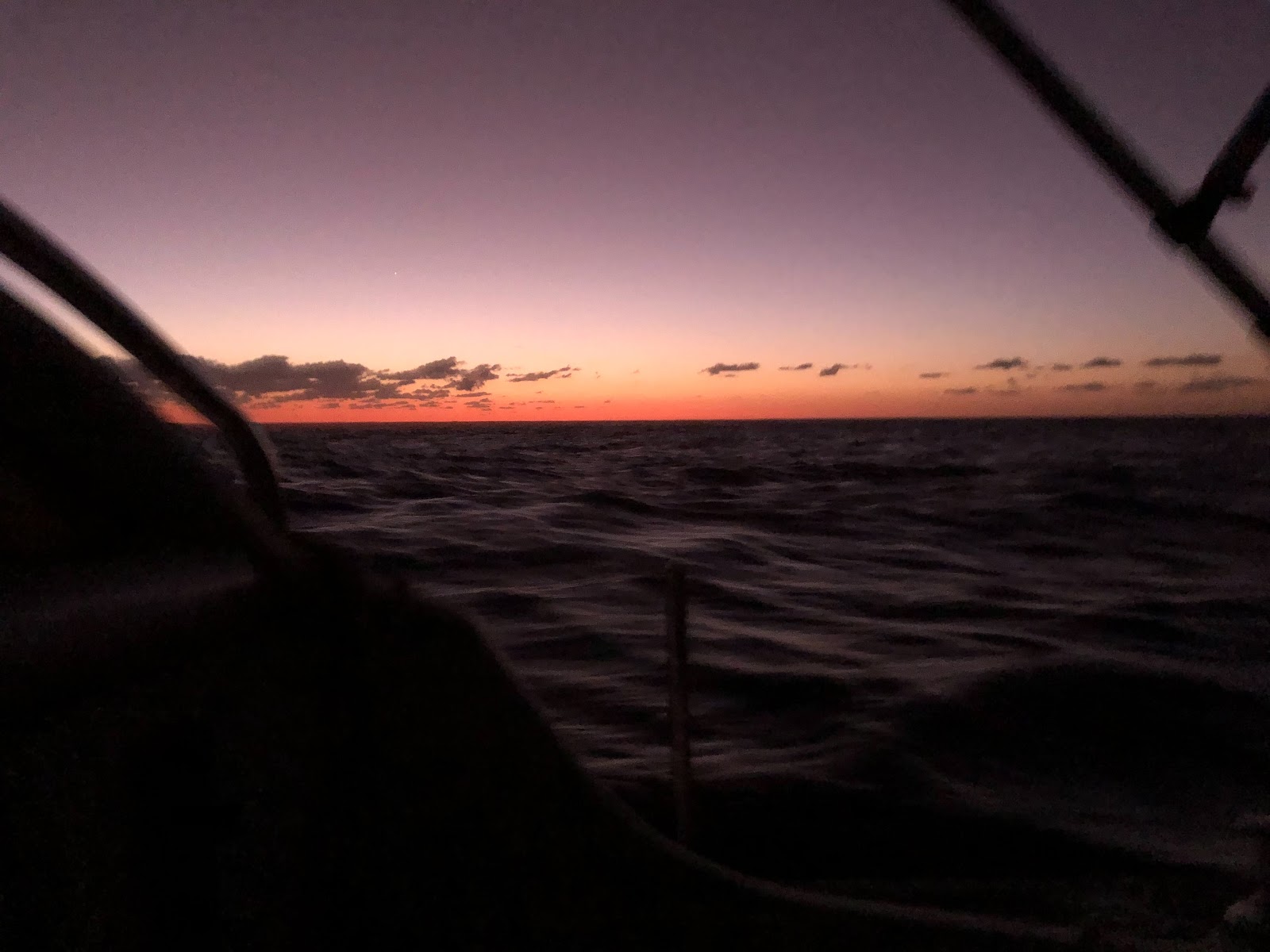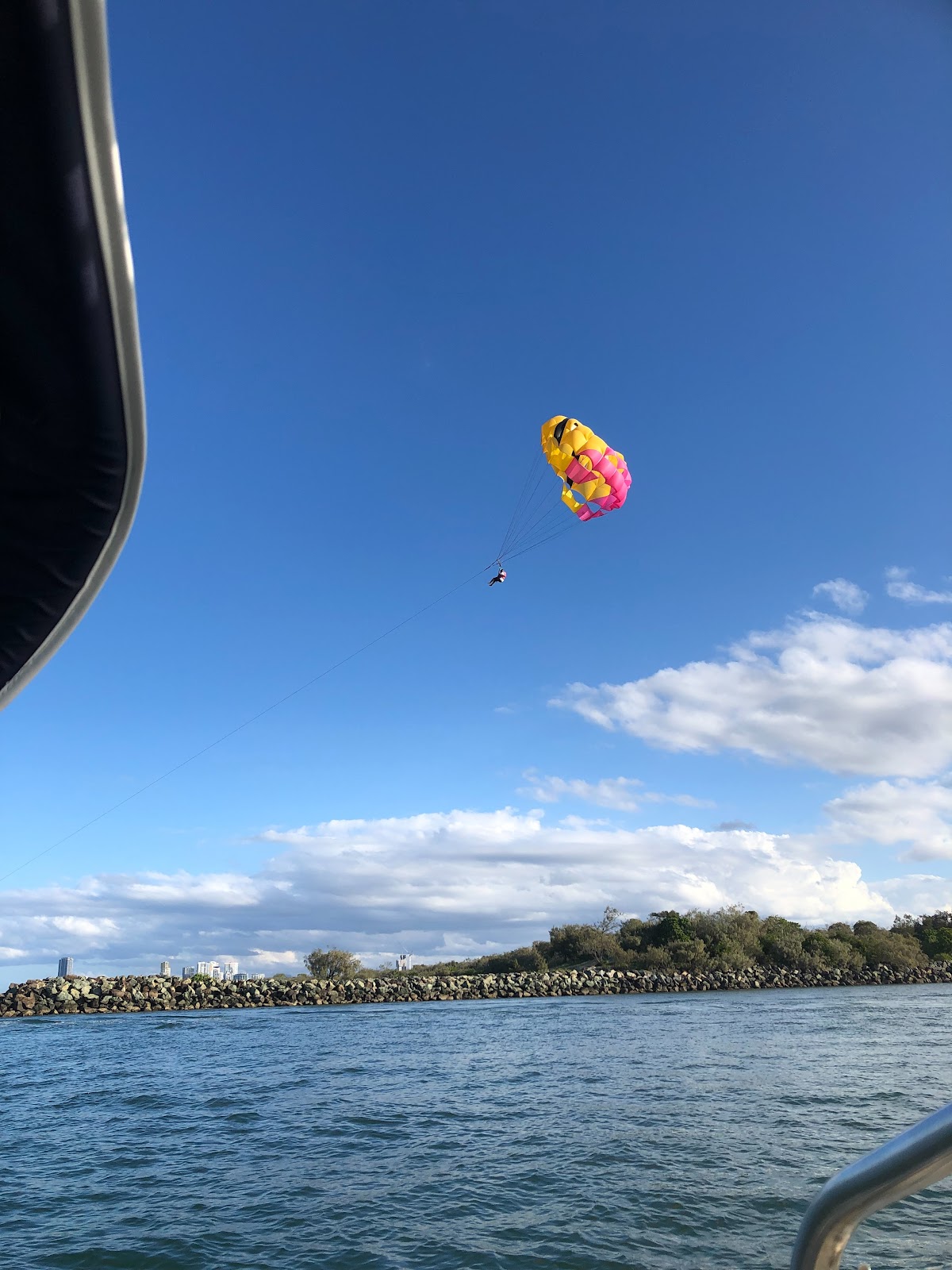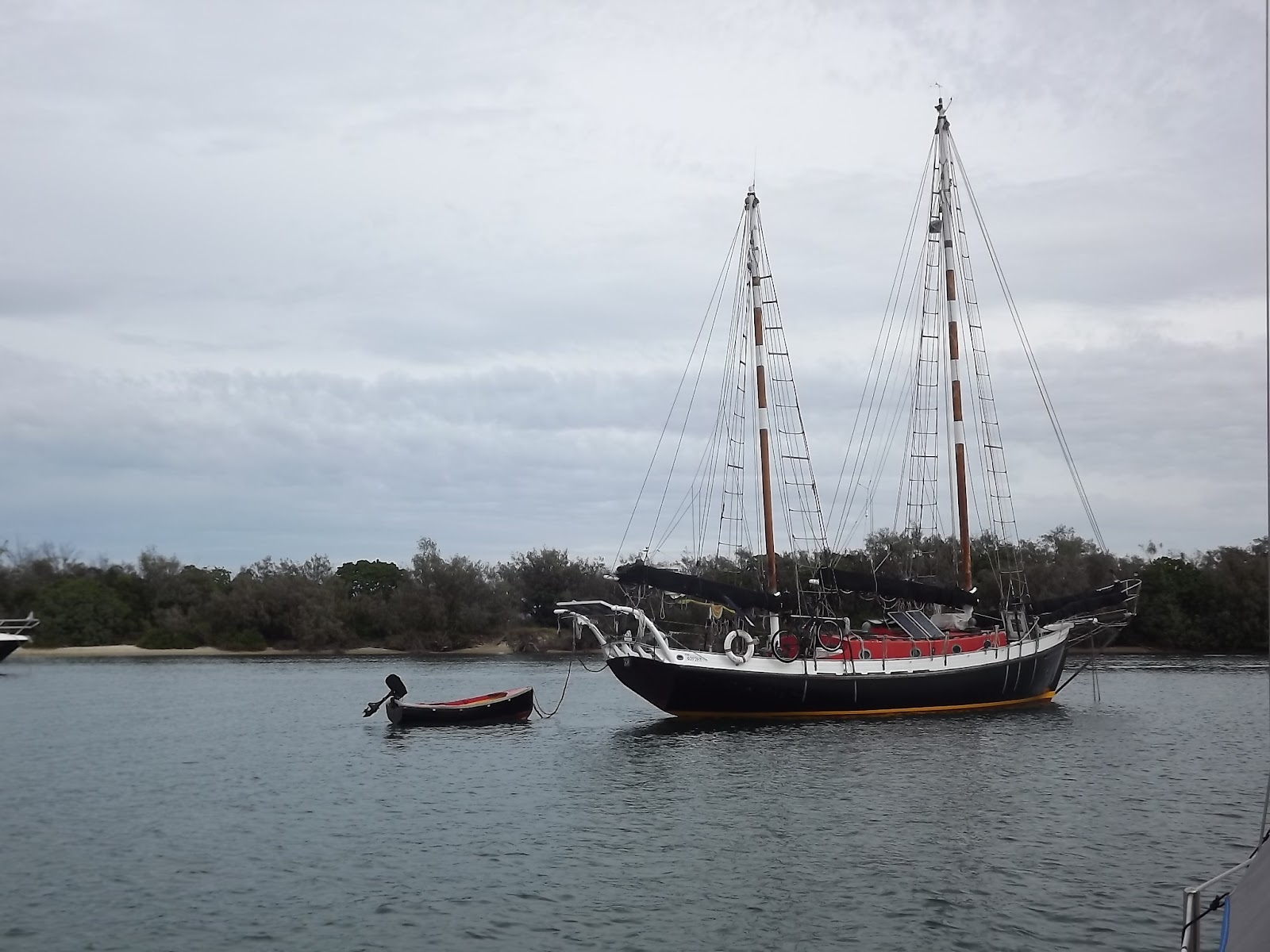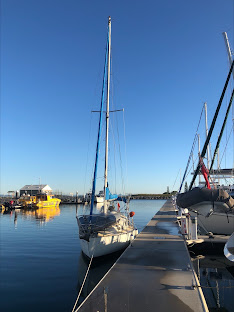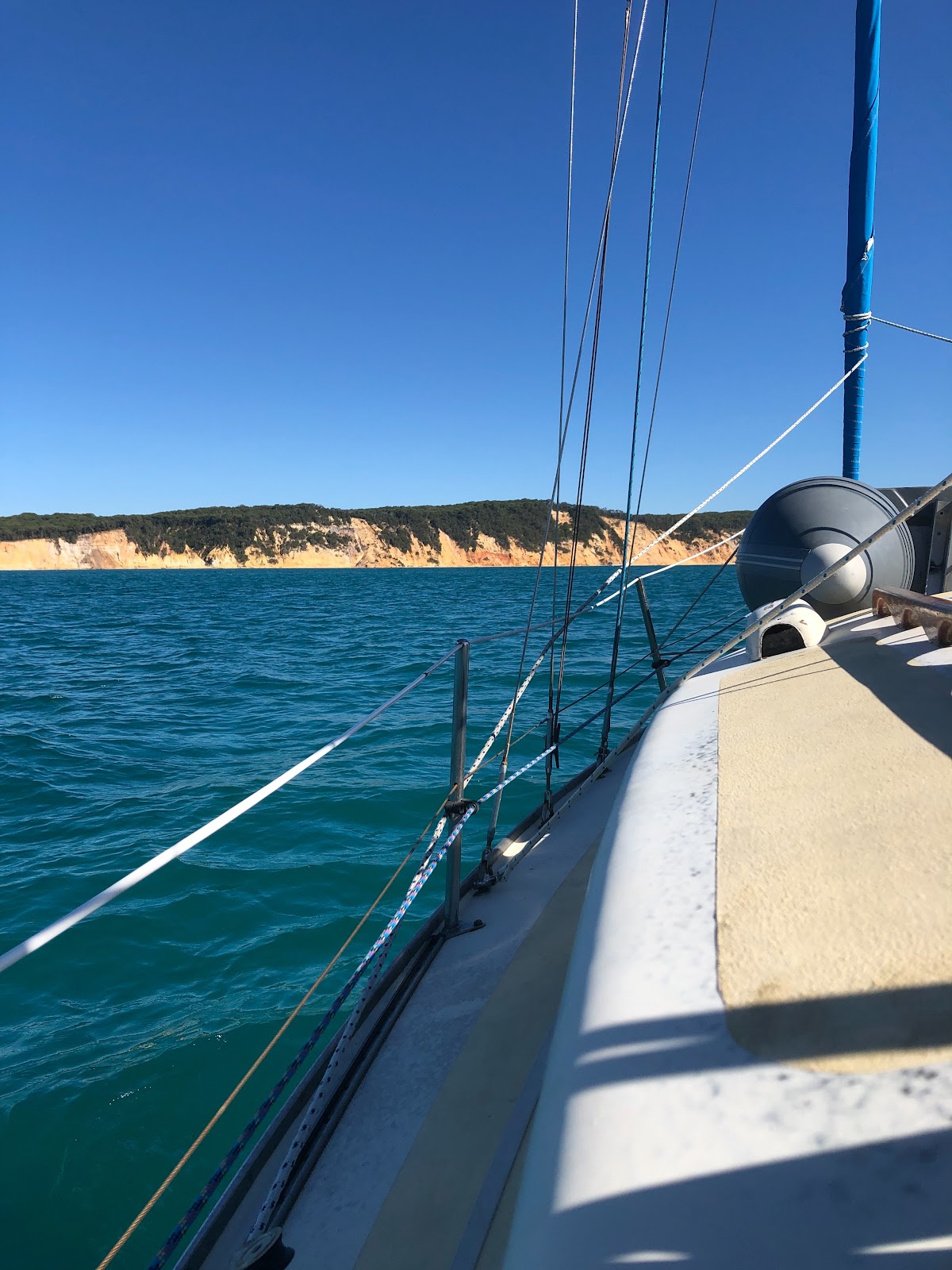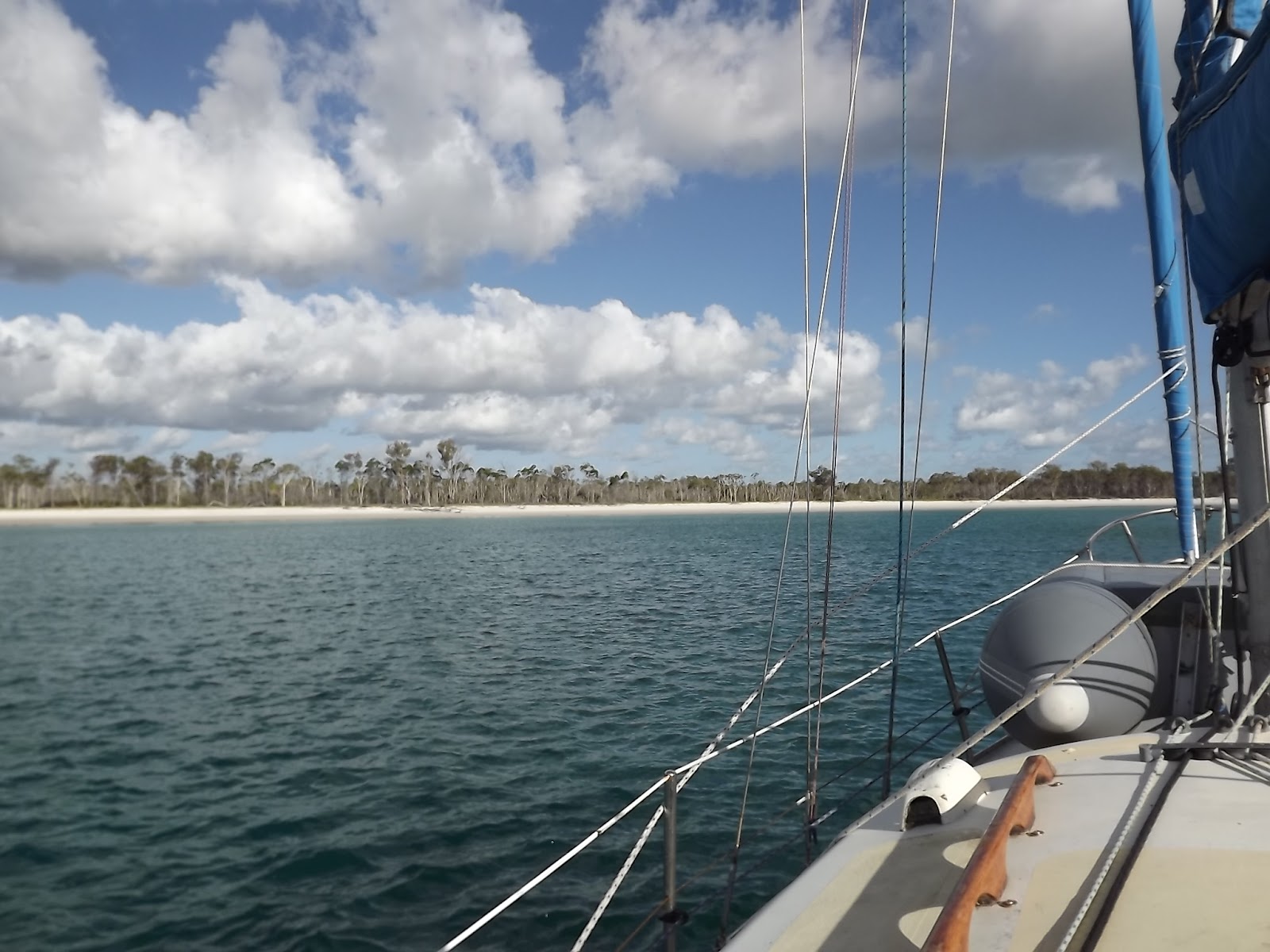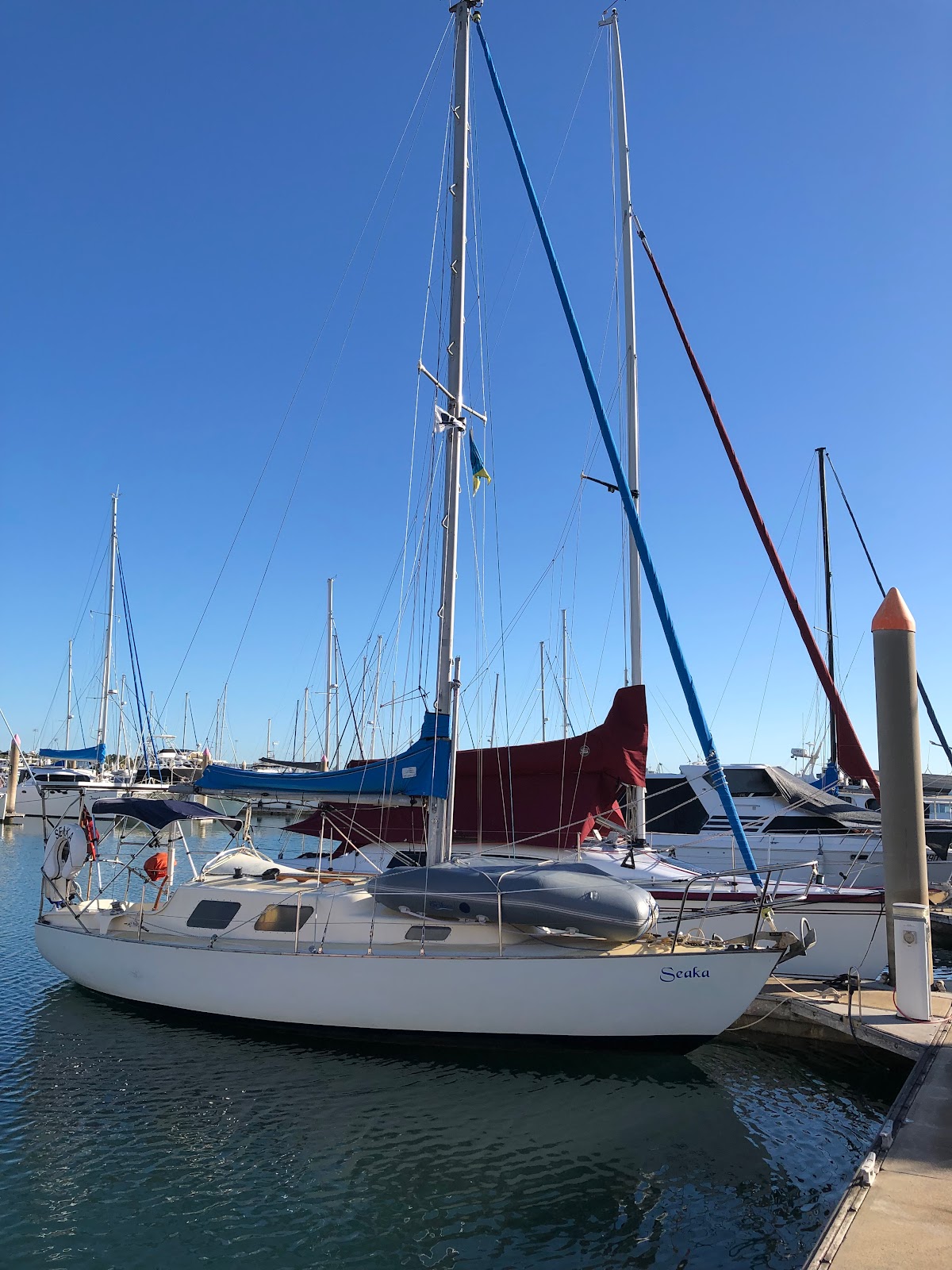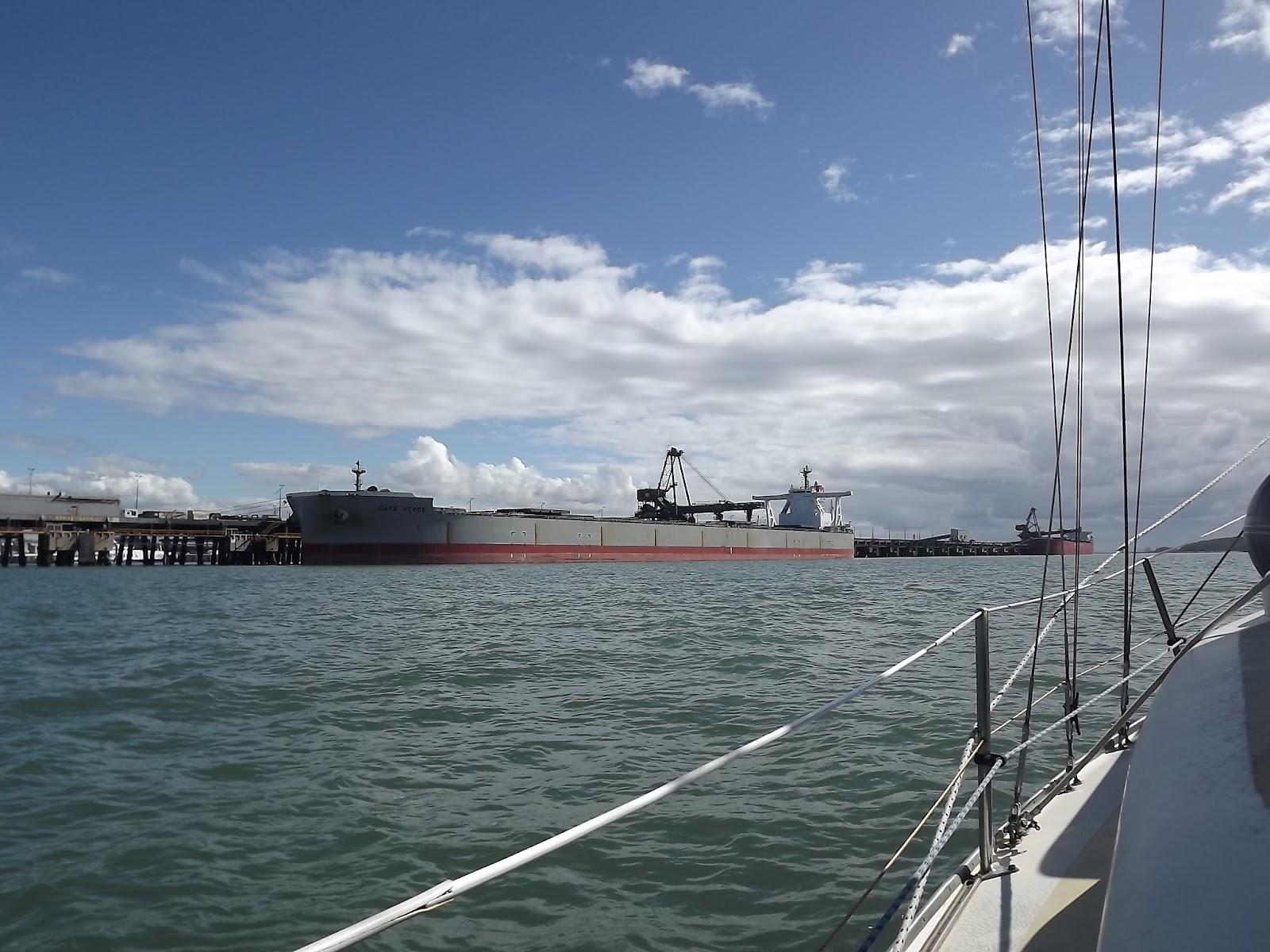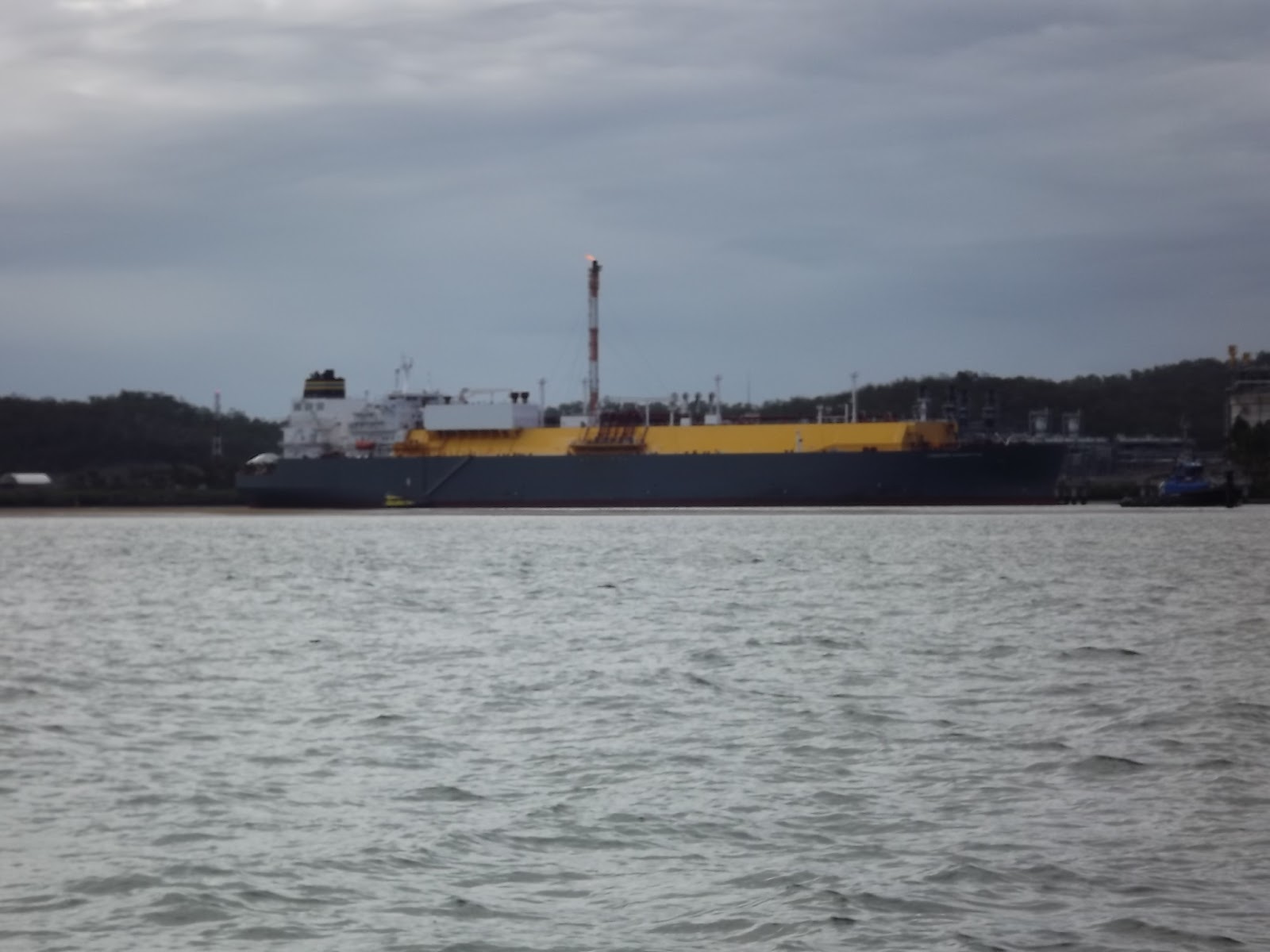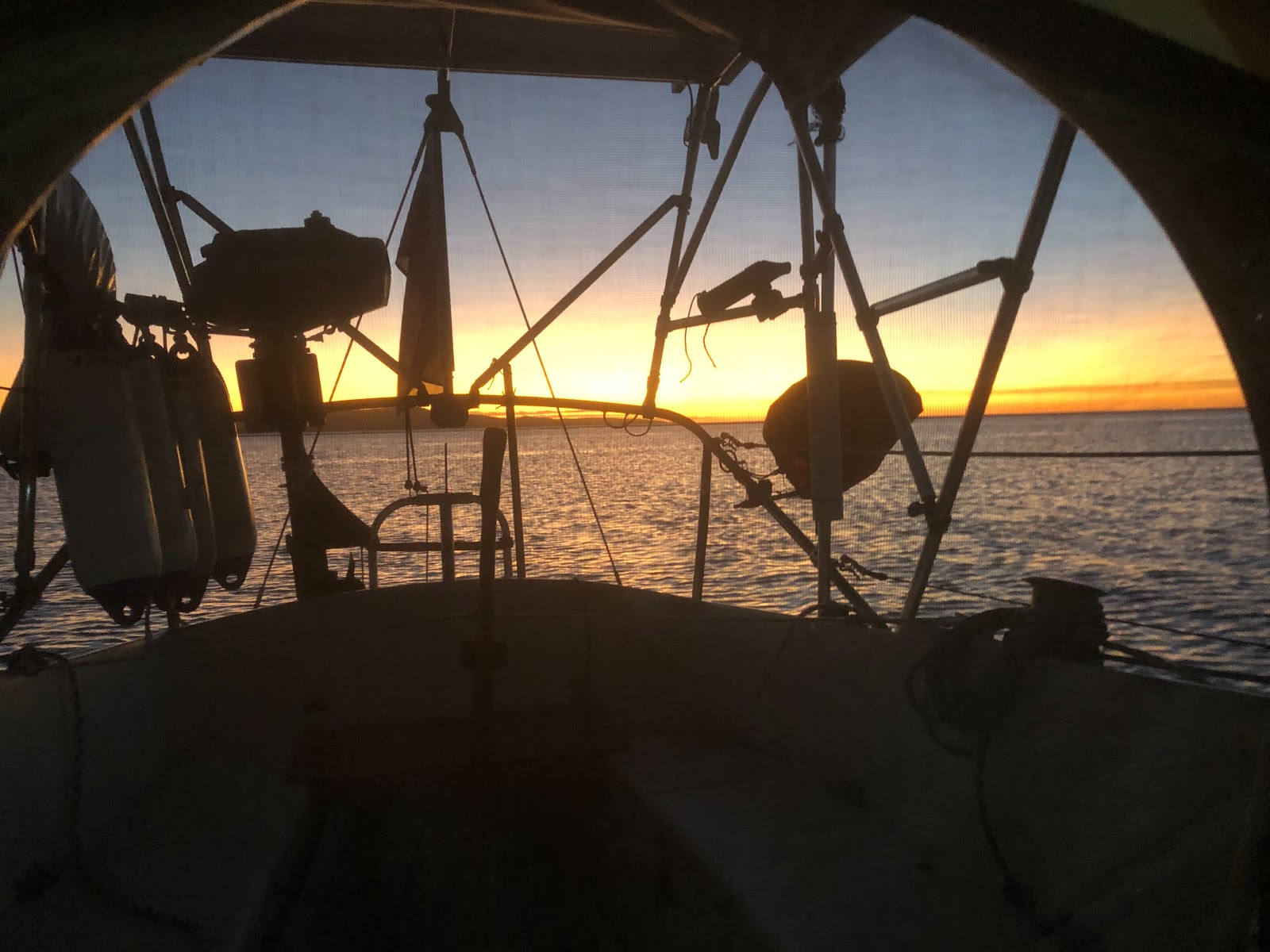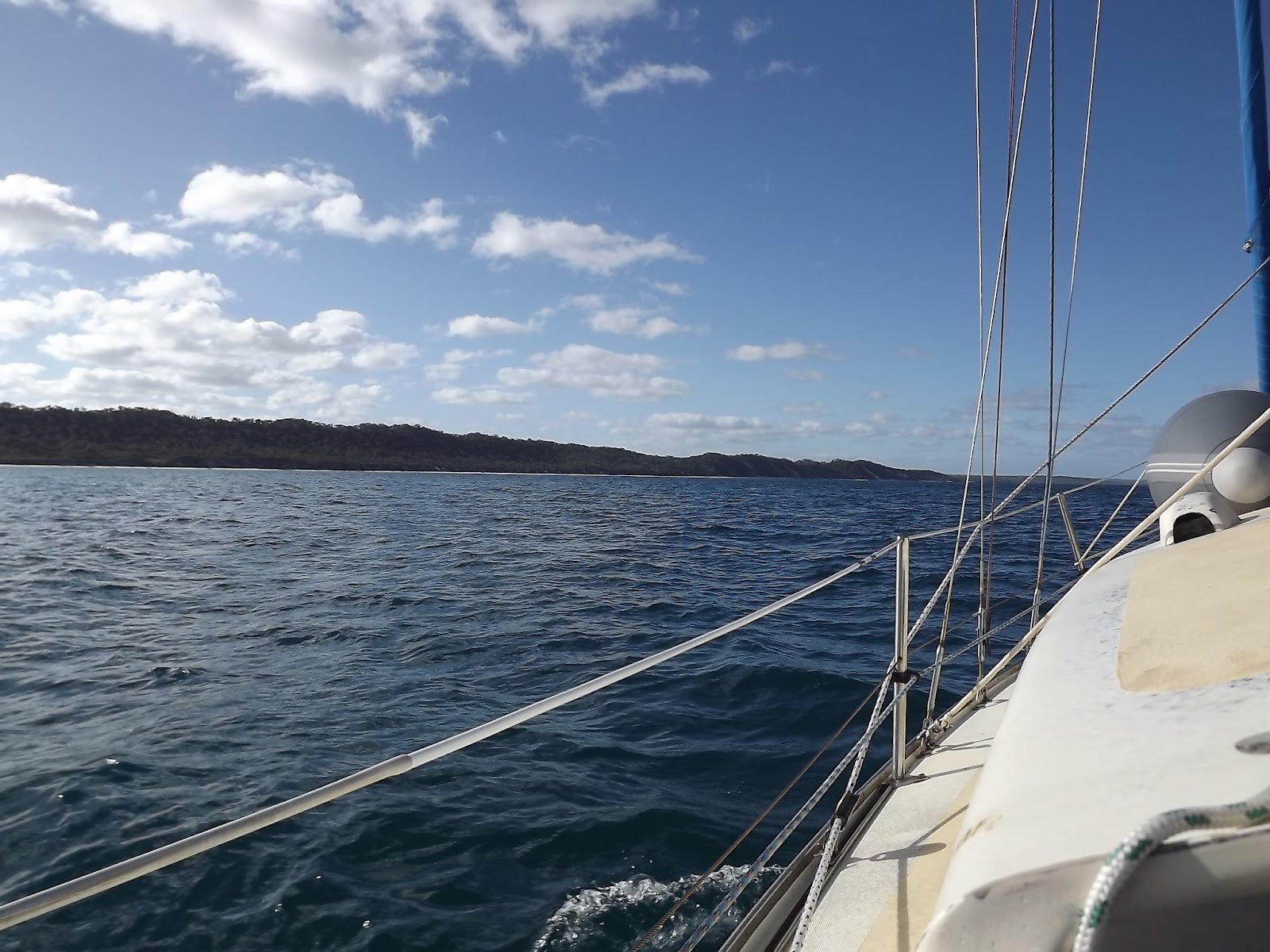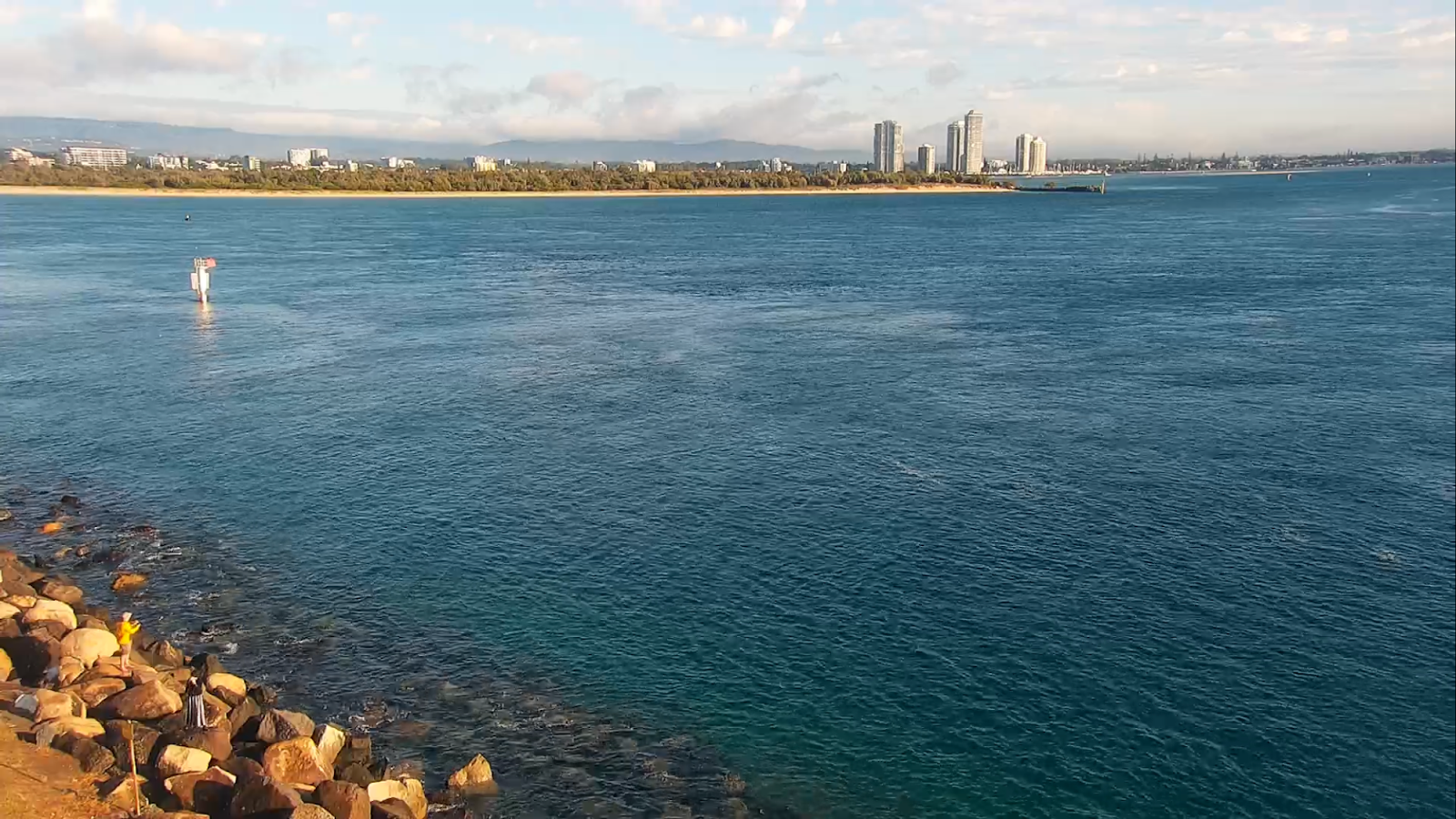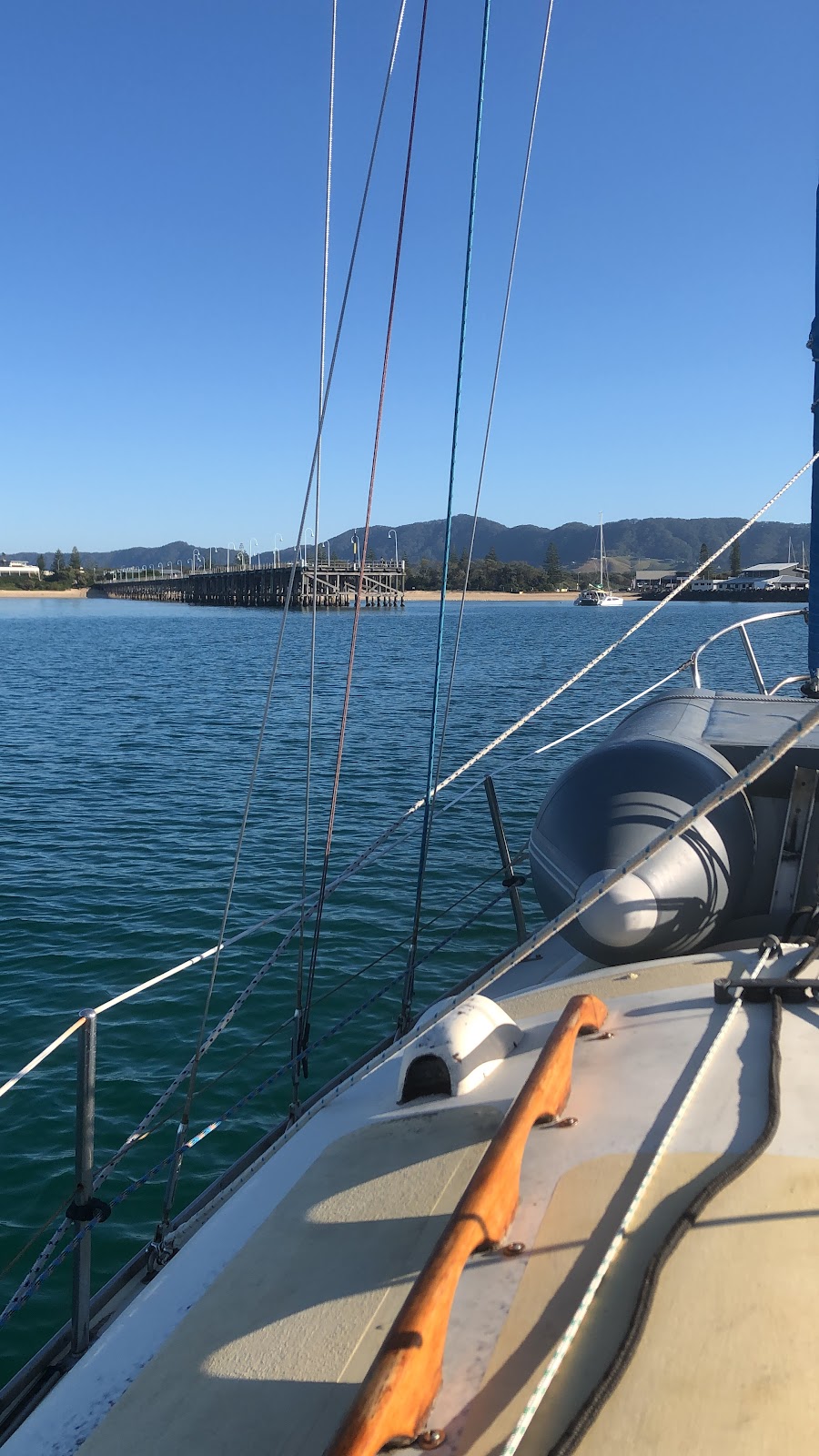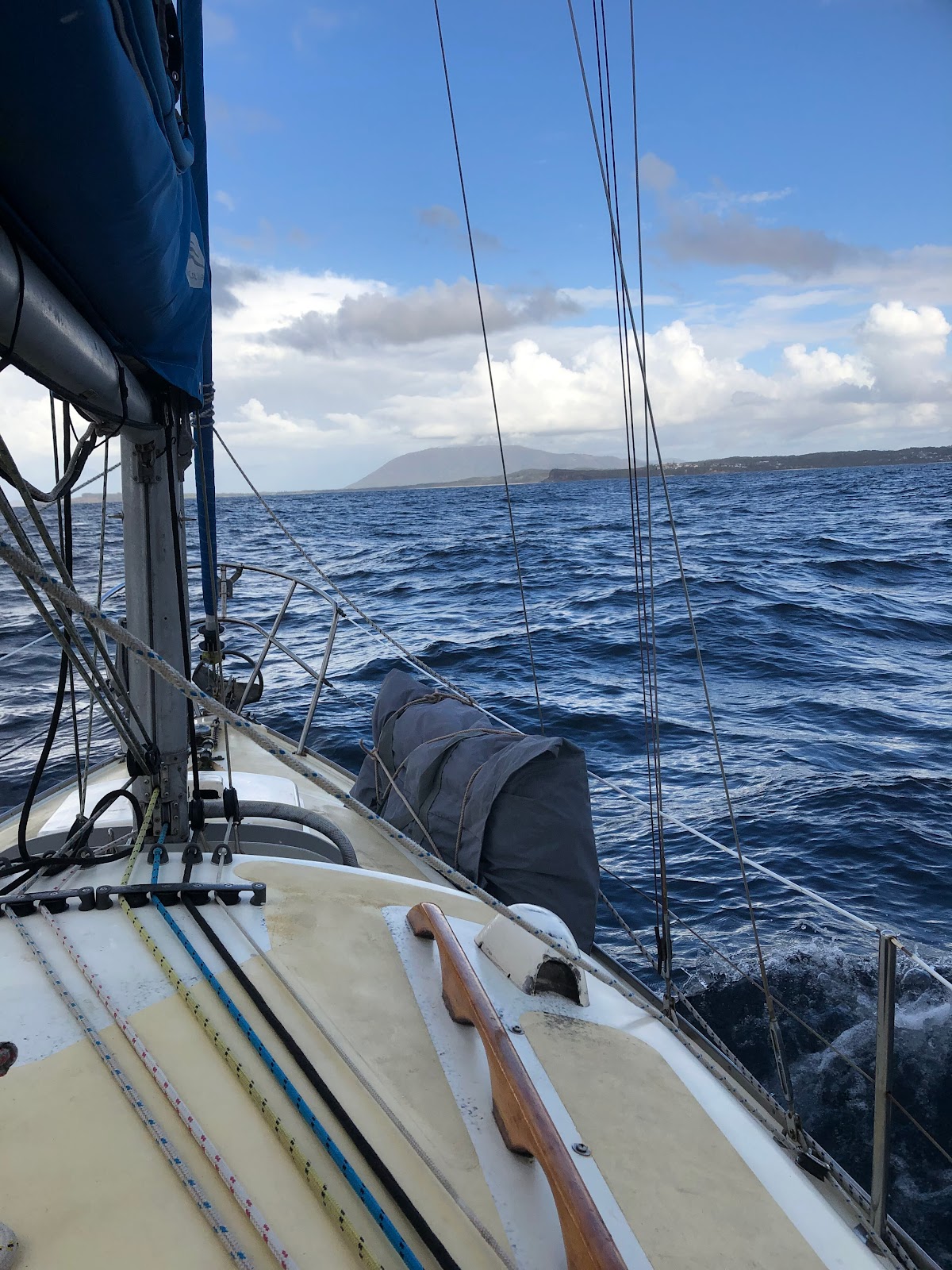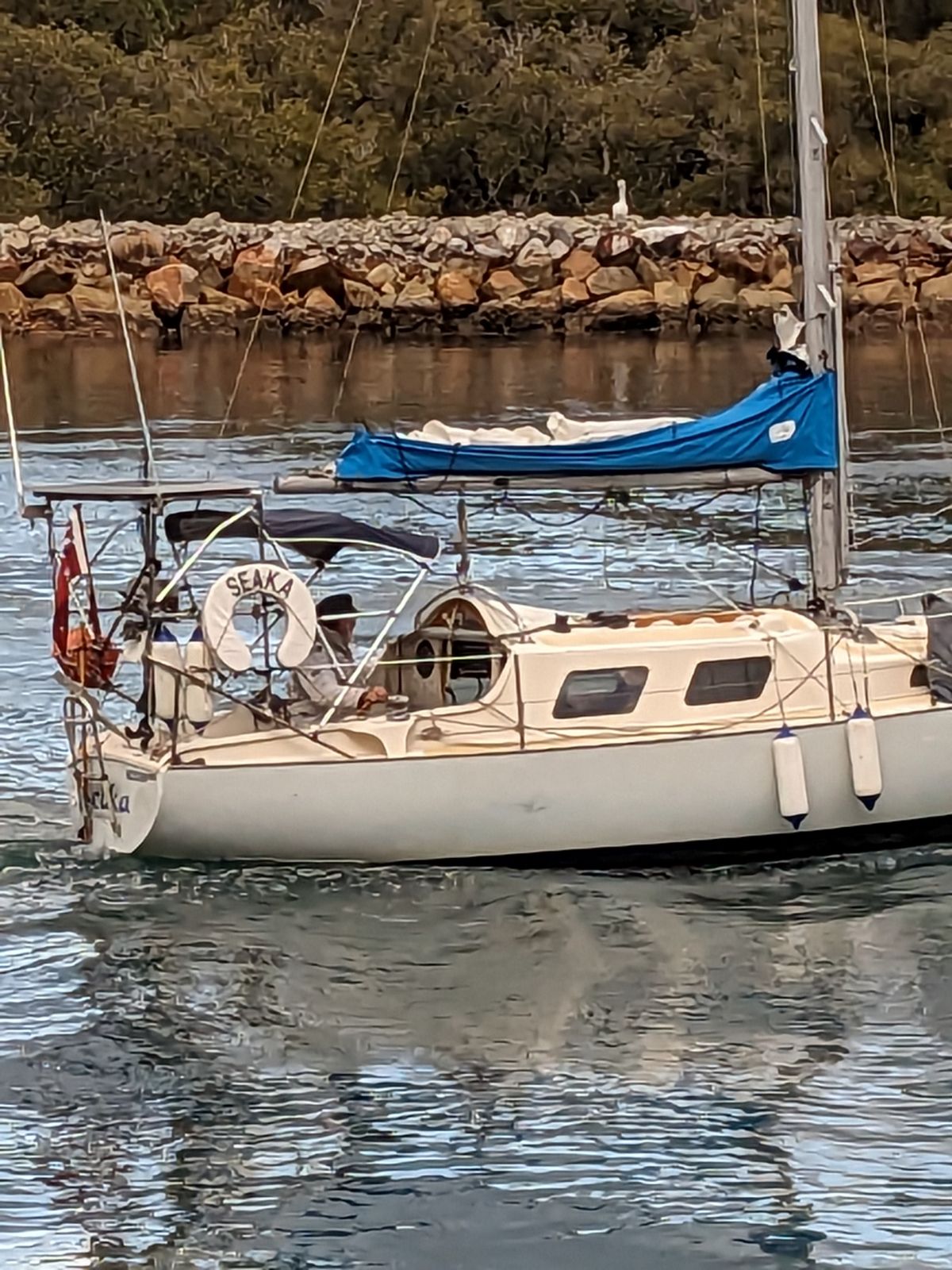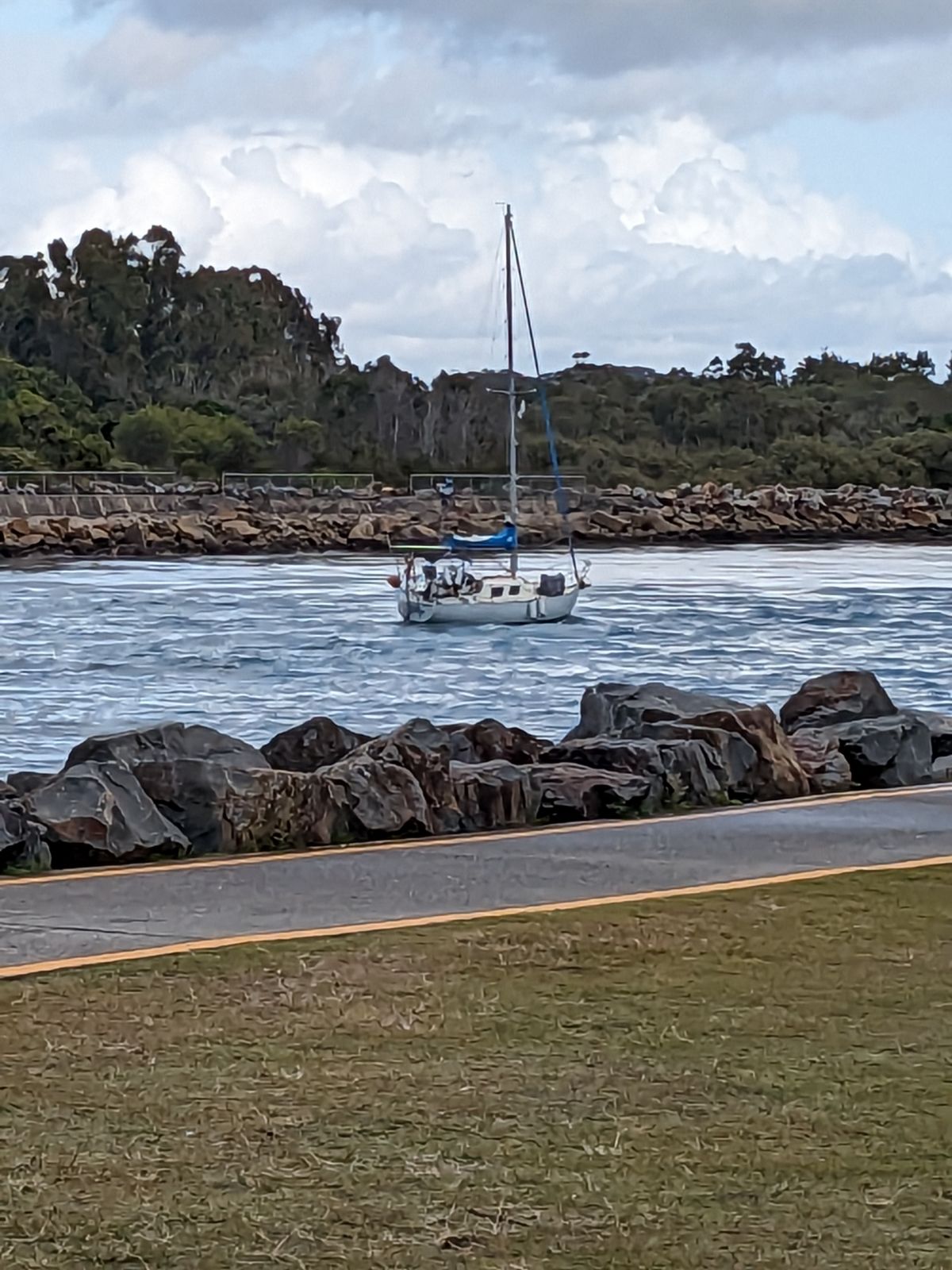Scroll down to get the latest post of 20/07/2023
So after the delays of Covid we are finally about to head north into Queensland again. On this voyage I would like to get as far north as Townsville, the limiting factor is having medical appointments mid October and a trip to New Zealand late October. We normally get back early October so reaching Townsville should not be a problem unless I linger too long along the way. Specifically on this voyage I intend to visit those places I have missed on previous voyages so I will be only passing through places I have already spent some time at. Hopefully on this voyage I will be joined later by John on MARIA-ANN, Formit’s first mark 1 Top Hat and Greg on LEWIE, a New Zealand built H28, who sailed with me on our 2019 voyage.
So when are we [SEAKA and I] going, well that was last weekend but the weather has thrown in a little East Coast Low and it now appears that I will leave next Saturday 8th April for Trial Bay, then Coffs Harbour on Sunday and Yamba on Monday. I will then have a couple of days off while another East Coast Low goes up the North Coast of NSW before sailing up to the Seaway and into the Gold Coast and thence onto Morton Bay.
The start of the East Coast Low.
Preparations for this voyage have been going on for some time. During the refit we have checked all of the rigging, navigation lights and sails. We only had to have a zipper replaced in the Boom bag in which the main sail is stored. The hull was acid washed and then polished while we were on the Laurieton Fish Co-Op slip. We slipped SEAKA to redo the anti fouling and during that exercise discovered five osmosis bubbles which were removed and repair by Greg of LEWIE. I have reconfigure the echo sounder, so hope to have better depth information this time. Inside we have done a complete mould wash and most importantly installed new hoses and anti-syphon fittings on the intake and discharge of the electric toilet. I also installed some extra shelving to hold fresh fruit and vegetables. I have also started to polish the deck, the cockpit is done and I will do the rest on non sailing days. In addition to our last trip I am taking the boat BBQ with the intention of not only cooking meat and fish but also to smoke fish as well.
New fresh food shelves.
Cleaning SEAKA's hull prior to applying the anti-fouling.
One of the large osmosis found. Only on Port side, must have been a bad day in Baker's factory.
Two of the smaller osmosis before repairs.
Clean propeller ready for anti-fouling.
SEAKA all done on the slip and ready to go back in.
Over this Wednesday to Friday I will be getting all of the food stores onboard. We have a bit more at the start of this voyage as I want to avoid going into marina’s as much as possible. The reason for this is that marina costs have sky-rocked since Covid so hopefully I will only go into Gladstone, MacKay and Townsville marina’s.
So on this Wednesday it’s still raining, hoping for better weather over the next two days to get all the food and clothing onboard.
SEAKA is on her mooring at Dunbogan in the Camden Haven Inlet.
Saturday 22nd April 2023.
Well that went well! On those two days we got all of the dry food onboard and stored away. We also got the fresh food and frozen food on board with only the inflatable dinghy and outboard motor to go. We are ready to go!
Yep, NO! So the weather had other ideas and with much reluctance I decided that the sea conditions, with 2-3 metre waves, were going to be rather uncomfortable, if not dangerous. That’s apart from the possibility that all the bars we had to cross would be uncross-able.
So the following week I retrieved all the fresh and frozen food and some clothing back home again. We then began the “weather watch” with much discussion been carried out with fellow sailors on just what the weather was doing. We did have a new plan to go last Monday, but that again, soon became wishful thinking. We have been affected by those Lows that have been sitting in the eastern Tasman Sea producing the large swell we are experiencing along the coast at this time. Great for surfer’s I suppose!
Our approach now is to monitor the weather, which we can do out to about seven days ahead. We are waiting for a high to sit over us and bring calm conditions again.
The plan now is to get away some time in May.
Working on bits and pieces while waiting for the weather to improve.
SEAKA is still on her mooring at Dunbogan in the Camden Haven Inlet.
Sunday 30th April 2023
So finally we think we can get away!
We are going on Monday morning [tomorrow] with the plan to cross the Camden Haven Inlet bar around 0630 hours.
The plan is to go to Trail Bay on Monday [52nm] arriving around 1900 hours.
Tuesday to Coffs Harbour [36nm] arriving around 1400 hours.
Wednesday to Iluka [60nm] arriving around 1600 hours.
Thursday from Iluka to the Gold Coast [100nm] arriving at 0700 on Friday morning
to get the high tide into the Seaway.
My next blog will be posted next weekend.
Sunday 7th May 2023
So we finally got away on Monday the 1st, exactly one month after our planned departure because of the weather. But the weather still had a sting in the its tail. The passage over the Camden Haven Inlet bar, after doing two circles inside the bar, was exciting to those watching but to me there was bit of, ”Oh S…!” involved. Seeing what was going on I opted for the new northern channel and made it safely out without taking any white water over the bow, or elsewhere for that matter.
Outside I found a steady westerly wind and only the large swell which didn’t effect us at all. With speeds of around 6 to 7 knots I was going great guns until well past Port Macquarie when the wind dropped out at 1030 hours, so it was a motor sail the rest of the way in good conditions up to Trail Bay arriving just before sunset. During the day we had been visited by several pods of Dolphins and I saw a large Green Turtle as well.
As I was rounding Laggers Point west into Trail Bay a passing trawler called on the radio and warned me that I was to close in and the “I should head north NOW” which I did. I was then kindly informed that there are several isolated bommies in that area and that all vessels should stay out in 15m plus of water. I thanked him very much. I anchored in 10m of water to lessen the effects of the swell and had a fair nights sleep. We completed 56.4nm in 12 hours with 6 litres of diesel used.
Smoky Cape.
On the Tuesday morning we were away by 0600 hours heading north to Coffs Harbour. By 0800 hours we were motor sailing, again, and off Urunga, with the wind directly from the north we dropped all sail and motored on in flat seas. We arrived in Coffs Harbour at 1445 hours with 35.8nm completed in 9 hours with 7 litres of diesel used.
Prior to arriving in Coffs Harbour I had been discussing the weather with my sailing mate Shaun and we came to the conclusion that I should keep going overnight to Iluka on the Clarence River. So I refuelled the main diesel tank and cooked a meal. After a stop of just two hours I was underway again. Now there were ten other boats anchored out in Coffs Harbour and soon after I had logged onto Marine Rescue, four other yachts followed. We had to motor sail until 0230 hours when the westerly land wind came in strongly. Over the next few hours I steadily reduced sail so that we motored across the Clarence River bar in flat conditions on Wednesday morning at 0700 hours. A large motorised barge was leaving the Clarence River as I entered.
The seas can get big!
After a 24 hour rest we lifted the anchor on Thursday morning at 0630 hours bound for the Seaway on the Gold Coast. We sailed out into flat calm conditions that meant once again we were motor sailing. Just north of the Clarence River is the RAAF firing range at Evens Head and would you believe it just 10 minutes before they closed the range area they put out a notice on VHF radio advising us of the co-ordinates of the range. This meant a sharp turn to the east for us to clear the 153 degree 30’ Latitude line, being the eastern boundary of the range. This detour took some time and then we had to head back to the coast to get out of the Australian East Coast Current that runs in a southerly direction. As we came up on Ballina around 1500 hours a couple of yachts went in. I sort of questioned to myself, why do that? Well three hours later I had my answer when when encountered strong SE winds and a rising sea. When I took a large splash of water into the stern of the cockpit, the only time I have done so, I said “B….r it, I’m going into Bryon Bay”.
Entering Byron Bay I found conditions so much better with only a small chop and no swell. Making it real easy I just anchored at 2000 hours on my waypoint from the last time I anchored here in 2019. We completed 57.7nm in 13.5 hours with 10 litres of diesel used.
Remembering the last time I sailed out of Byron Bay I only raised my foresail when we departed at 0420 hours for the Seaway. We got a good sail in, with 6 and 7 knots on quiet a few occasions, before the wind dropped out again and we were motor sailing again. Around 1100 hours we crossed over into Queensland. Around 1500 hours we crossed the Seaway Bar in calm conditions.
Now the fun starts! Really? I had sort of decided that I didn’t really want to anchor in Bum’s Bay again and would like to anchor somewhere else this time. So I decided that the anchorage on the north side of Wave Break Island, just inside the Seaway, would be ideal. So I motored towards the anchorage, noting how much fish was being shown on the sounder, and on entering found myself in rather skinny water and after two bumps aground did a U turn and got out of there, Whew, got away with that, so its going to be Bum’s Bay after all. Nope, the Queensland bottom hadn’t finished with me yet! I then avoiding a parachute being towed, I cut the corner going south, after neglecting to observe the east cardinal mark on my port bow that is sited to the west of the Seaway. Hard astern, got some movement, hard to port and full steam ahead saw me clear the shallow area. Onto Bum’s Bay where I anchored outside for a moment to see what was going on, then motored in the anchor at 1600 hours east of Black Peal, an old lugger I have seen on all my trips north. The owner keeps her in really good condition.
Towed Parachute's.
Black Pearl.
So 42.1nm in 12 hours with 7 litres of diesel used.
Total to Queensland is 253.7 nautical miles [or 470km] with 37 litres of diesel used during a sailing time of 61.5 hours over 5 days.
So over the last two days [Saturday-Sunday] I have been catching up on my sleep, repairing a couple of items and rearranging gear onboard. Also today I will inflate the dinghy and sort out some fishing gear for this area. Bum's bay is really not that crowded this time.
Bum's Bay [Marine Stadium]
Tomorrow, Monday 8th, I start to head north and am hoping to get to Mooloolaba around next week end.
Wednesday 17th May 2023.
Well it’s ten days since our last blog and a lot has happened in that time. To start with we are in the Scarborough Marina, second time, and plan to depart here tomorrow for Mooloolaba, Double Island Point, the Wide Bay Bar and into the Great Sandy Straits.
So, back to Bum’s Bay. On that Sunday night of 7th May we were expecting a cold westerly wind change and as it slowly happened I noticed that the stink boat to the north of us would be sitting right over our anchor! So waiting my chance, I lifted the anchor and drifted to the south about 30 metres. All good. Nope! So when the westerly did kick in we all swung around and settled into our new positions. All good I thought but about 2am, yes it was blowing hard enough that I was still awake, I noticed a live-aboard was slowly but surely drifting down onto us. I let more chain out. But then I also had to keep an eye on the yacht on my port side as we swung back and forth.
Boy, was I glad to see the dawn and after a quick breakfast I was out of there [8th May] and on my way to Jacobs Well which would be sheltered in these strong westerly winds. Once anchored I inflated the dinghy and went ashore to buy 40 litres of diesel, our total usage to this point. The next day [9th may] I went ashore and brought a new braid line for my fishing rod. Once I had the rod set up I went out and fished for two hours with only a throw back bream in the first few minutes, never had a bite after that. I’ll say no more.
Dredge passed in passage to Jacobs Well.Jacobs Well.
On Wednesday [10th May] I went ashore and tried to by some vegetables but found there was little available so only ended up with bread. In the afternoon the wind went back to the SE and the anchorage became very rough, so off [11th May] to Russell Island at daybreak [0620] to beat the wind. Made a fairly quick voyage to Russell Island and noticed that there was a new dinghy dock which I quickly made use of. I walked up to the supermarket where you DO NOT look at the prices and replenished our larder. I walk a bit more to a hardware store and brought 4 litres of Meths.
Anchorage at Russell Island. We are the blue dot.
Returning to Seaka I had discussion with Brian Wood, a Top Hat owner, about the weather and as a result we left Russell Island the next morning [12th May] at 0645, bound for Deception Bay with an anchorage off Scarborough.
We motored with the furler out until we were north of MaCleay Island and with the wind lifting, turned the motor off for a rounding sail, without the main, all the way to Scarborough. We attained speeds of between 5.5 and 6.5 knots early on in the trip but after passing the Brisbane River this dropped to the mid 4’s. As I approached Scarborough Brian phone me with an offer I couldn’t refuse. Brian would pay for one night in the Marina and I would pay for a meal at the local RSL. Done. On arrival I was into the washing which was done just before we went out to the RSL. The next morning Brian took me to the local Woolies and a quick drive around Redlands. Later that day I made contact with another yachty I knew and we discussed the approaching bad weather due in a couple of days. I made the decision that I should head back into the Gold Coast to seek shelter. So departing the Marina I anchored off Scarborough in Deception Bay for a departure south the next day.
First Berth in Scarborough Marina.
On Sunday [14th May] morning at 0430 I looked at the weather before setting off and noticed that the whole Gold Coast was going to cop it with this coming storm so I decided I was better off where I was than trying to avoid cramped anchorages further south and I would avoid a 70 nautical mile round trip. So nothing happened for two days apart from reading and relaxing.
But that Monday [15th May] night we got hit, contra to all the weather reports, with 50mm of rain and winds to over 30 knots! So after looking at the weather again the next morning [16th May] made the decision to go back into the marina for 48 hours. I struggled for over two hours to retrieve the anchor and make it into the marina. As I was docking the wind blew the bow onto the pontoon which we struck fairly heavily. Later I was to discover that one of the shelves in the forward cabin where we stuck the pontoon had popped off. Wasn’t much holding it on.
Seaka on the "long wall" where the stack boats are moored awaiting their owners.
On Wednesday [17th May] I set too, to repair the shelf and the dinghy seat which I had broken a couple of days ago. At the same time I started to recharge all the batteries from a mains charger as they had been depleted by all the overcast weather we had had over the last week or so. Had “another” look at the weather and decided that I would stay in the marina for another 24 hours to avoid a strong wind warning. We head to Mooloolaba tomorrow morning [Thursday 18th May].
I have damage my card reader so until I can replace it there will be limited photos. I will post them as soon as possible
We have done 320 Nautical Miles [593km] and used 40 litres of diesel.
Friday 26th May 2023.
So we set off for Mooloolaba from Scarborough just by by after 0700 and motor sailed north. There was not much wind until we rounded Bald Point on Bribie Island at 0900. We had a quiet sail up to Caloundra and after rounding the headland did a check all round and went below for a few moments. On going back to the cockpit there was this fisherman on one of those ski things just off our port side! How I missed him I have no idea and we were 1 nautical mile off shore. Eventually we had and easy entry into Mooloolaba and anchored in the duck Pond adjacent to Warren in WUNJO with whom I will travel in company for a while. Warren came over and said I’d anchored in the tourist boat routes and it might be better a bit over to the north. I agreed and moved which turned out to be a good move. The next day I launched the dinghy and went ashore for a new computer card reader some fresh food and 10 litres of diesel. With using the dinghy I found that my seat repair was no good so will have to explore other options when I can get to a Bunnings. Very cold weather, certainly not normal!
So on Sunday [21st May] I was up very early, couldn't sleep, so we left the Duck Pond around 0250 for Double Island Point some 50 nautical miles away. After an uneventful trip we arrived off the west side of Double Island Point at 1330 hours. We did not attempt to go into the sand lagoon as we needed to get away early the next morning for the Wide Bay Bar. There were five yachts of various sorts anchored out and we were all in close to the cliffs which meant I had the best night ever in this anchorage, i.e. no rock and rolling!
Approaching the cliffs at Double Island Point.Early the next morning [22nd May] we sailed for the Wide Bay Bar. To cross the bar we have 4 waypoints to follow and we entered this track at 0830 hours with a very benign sea without any breaking waves but still rough. Finally at 0915 we were over the bar but one yacht was anchored out there in a bit of trouble. When I signed off from Marine Rescue Tin Can Bay they indicated their rescue craft was on its way and soon after it passed us. All must have worked out OK as I saw that he was anchored at Burnett Heads when we entered that port some days later. Out of all the crossings I have done, this crossing, for ease of, would be rated number two.
After crossing the Wide Bay Bar we entered the Great Sandy Straits and were greeted by a pod of the river dolphins, a first for me. So we sailed up to Garry’s Anchorage on Fraser Island.While anchoring we were greeted by yet another river dolphin, surly a good sign.
River Dolphin in Garry's Anchorage.
Expecting Garry's Anchorage to be crowded, considering the number of yachts heading north, I was very pleased to have only five vessels anchored there. The number reduced to only two of us by evening as yachts moved on. The next day [23rd May] I waited until low tide and the went fishing in our dinghy. Well that only lasted twenty minutes with most of the time spent getting out of the shallow muddy water. I only made about 4 or 5 casts to net a 50 cm Flathead which meant fresh fish for two meals.
Early morning in Garry's Anchorage.
Seaka from the shore in Garry's Anchorage.
I had planned to stay at Garry’s Anchorage for two days but predicted strong NE winds on Friday meant we had to move onto Burnett Heads [24th May]. As we crossed the Sheridan Flats we had only 500mm under us at one point as we motored very slowly. One of the yachties had said that the best shelter from the SE wind as well as being a better place to depart from was Moon Point. I have always departed and arrive at the Great Sandy Strait on Woody Island, so this was a first for me. The voyage to Moon Point went as normal until we got to a bit of a pinch between Fraser Island and a long sand bank. We finally worked it out and moved east to Hawk Nest Beach where we anchored in 3 metres of water. As the water was very clear and 22 degrees decided I really need a wash so combined an underwater check of SEAKA, all was OK apart from barnacles on the boot paint at the stern! After a good sea water wash, a fresh water wipe down and clean clothes I felt really good.
Hawk Nest Beach.
The next morning [25th May] at 0615 hours we were underway for Burnett Heads. We followed two yachts out which was a mistake as they lead me into shallow water, I must stick to my sailing plans, which required a small change of course for us. We passed the second yacht under power and sail, with the full main for the first time of this voyage, but turned the engine off after 15 minutes and sailed at 6 plus knots until noon when the wind died and we had to motor sail to maintain 4.5 knots plus, our standard planned speed. Anyway that second yacht only caught up as we entered the port of Burnett Heads. I was chuffed to say the least! We moved 5.5 nautical miles up river for protection from the strong winds on Friday.
The yacht we pasted just out of Hawk Nest Beach. SEAKA's main sail fully up for the first time on this voyage.So on Friday [26th May] we did a bit of housework as well as replacing the boom brake rope as it had hardened from use and was not functioning as it should. I laid out our route for our Sunday 60 nautical mile voyage to Pancake Creek. This will be a 0300 start for a planned arrival around 1600 hours.
We have done 513 nautical miles [950km] and only used 60 litres of diesel.
Saturday 3rd June 2023.
We were underway by 0250 on Saturday [27th May] on our way to Pancake Creek. This is one of the long voyages we have to do, a total of 63 nautical miles, which I have found to always start out with strong winds, and such was the case this time. With even only having the Genoa out, the time came about 0400 when it had to be reduced. In the dark this proved to be a bit exciting and I can only say we did several donuts until all was under control and we were heading north again.
With the rising sun things became better and we sailed rapidly north until the wind began to died around 1100 and the inboard was turned on to ensure we arrived a Pancake Creek in the daylight. Eventually we had 1770 abeam and as it has happened every time I have sailed north here a-bouts, the wind went away and the seas flattened right out to nothing. Eventually we motored into the outer anchorage at Pancake Creek to take up a mooring for the night. I did deploy my fenders around the buoy but still suffered a disturbed night from the buoy banging on SEAKA’s hull.
The next morning we moved in to the inner anchorage and found a place to anchor. So I spent most of the day fishing. Very frustrating as I caught seven Flathead, all under size, before I caught a decent Trevally which would feed me for two meals. The next day I went for a walk on the sand banks before loading the dinghy onboard for a departure to Gladstone the next day.
The Trevally. Processed for two meals. Pancake Creek on the second morning.
With only 31 nautical miles to do on Wednesday [31st May] we departed Pancake Creek at 0730 and motor sailed, there was only a very light wind, towards Gladstone arriving at the entrance just as the tide changed to a flooding tide. The tide can run up to 5 knots at springs in the Gladstone Harbour so its important to get the tides right. We were anchored on the western side of Quoin Island at 1500 for an entry into the Gladstone Marina on Thursday [1st June].
On Thursday as soon as we were moored up [in H5] I organised a booking on the Marina bus to go shopping at Stocklands Gladstone. Once off the bus I had my third PSA test blood taken and then started shopping for fresh vegetables, getting a haircut and generally sourcing those things we all need. Back at the marina I started doing the washing, targeting anything that had been used, even once. By tea time I had finished the washing and then had a light tea as I had had a Chinese food for lunch.
Seaka in H5 in the Gladstone Marina. !9 days of rubbish!Today I got a ride into Bunnings which means I now have enough, two months worth of Meths Spirits for the stove and a pine plank to replace the broken dinghy seat. So this afternoon I reconstructed the dinghy seat and started this blog.
Tomorrow [Saturday 3rd June] we will leave the marina around 1430 and head towards The Narrows with the intention of crossing by next Monday and entering Yellow Patch sometime next week. This time I intend to not go aground! [see 2015 trip].
We have done 614 nautical miles [1,138 km]. We have been using just under 6 litres of water a day.
Wednesday 7th June 2023.
Well four days can make a big difference, but first:-
So we left the marina around midday and motored the 11 nautical miles to Targinie Creek where we anchored mid stream in 5 metres of water. The bottom must have been fairly firm as we had to put up with the anchor chain running over its self with every tide change. Mind you the 10kg Rocna anchor never moved. The weather during our stay in the creek consisted of strong winds and on occasions rain. On the second day we put forth in the dinghy in the hope of catching some fish, I even cast the prawn net about for a bit, but all that was to no avail and I returned to Seaka fish-less.
Over the next couple of days we had those strong winds and rain, so not much was done apart from reading and watching the weather app and posts on FaceBook.
And now comes the crunch!
First the weather. Apart from Thursday and Friday of this week the winds predicted are generally SE at 15 knots plus which is above our comfortable sailing wind and during which we stay in an anchorage. The swell is from the east, as it has been for some time and it looks to continue into the future. That makes most anchorages rolly as the swell will turn around headlands into supposedly sheltered bays.
Secondly, our Military. At this moment there are partial closures in the Shoalwater Bay Training area with limited access to safe anchorages, anchorages which make up some of the best areas for cruising in Queensland. Then a couple of days ago we became aware of a “Notice to Mariners” that informed us that the whole Shoalwater Bay Training area was to be completely restricted, ie NO ENTRY, from next Monday 12th June until Monday 10th July. The only way around is via a 110 nautical mile voyage some 20 nautical miles off shore. There is not enough time for me to sail north through the training area before the restrictions come into force. This years military exercises are the biggest yet, involving many of Australia’s allies navies and are due to finish on Friday 4th August. With the short notice of the closures being giving there is a slim but possible chance that the closures may be extended out to 4th August.
So putting all this information together, including the fact that half of one of my teeth has fallen off, and that the sail north this year had been especially hard compared to my other three voyages into the Whitsundays I have reluctantly come to the conclusion that it is time to turn south. But on my way south I am going to stop at those places I have normally rushed past in our efforts to get up to the Whitsundays. So don’t think we will be home next week, there is still plenty to see on our way south.
The immediate weather situation is that we have a rare weather window to get south to the Great Sandy Strait. So it’s down to Pancake Creek tomorrow and onto Burnett Heads on Friday [9th June] and then across to Rooney Point, or there abouts, to see the whales that are congregating there now. I expect to spend some time in the Great Sandy Straits awaiting a suitable weather window before heading south to Moreton Bay.
These coal ships take over a week to load non stop. In contrast the gas ships only take about 48 hours.
We have done 635 nautical miles [1,178 km].
Thursday 15th June 2023.
Well I did say that four days can make a big difference, but that’s not the whole story now!
So we set off at dawn from the best Marina on the East Coast, the Gladstone Marina, for the last time. Unfortunately we did have an incoming tide and it took us until 1030 hours to clear the Gladstone Harbour Channel, slowing for one large coal tanker just as we exited the harbour.
I think this is an Aluminium factory.Large coal tanker coming in.
We had a pleasant sail down to Pancake Creek and after two goes, anchored in the outer mooring area for a quick get away the next morning.
Last Sunset at Pancake Creek.So I went to bed with the sun and eventually woke up at 0200 so decided to go. We had an easy exit using our track in on the plotter. By 0315 we were doing a nice 5 plus knots through the calm flat calm seas under the main, with one reef, and the full Genoa. Going pass 1770 the wind started to drop and we turned the inboard on to maintain our speed on this 60 nautical mile voyage. At this point I turned towards the coast to see if I could get calmer seas to increase our speed.
We hadn't gone far when at 0830 the engine let out a horrible scream and with two loud bangs
STOPPED!
Needless to say I was stunned. A quick check showed that the engine had not overheated, that the gear box was OK, but I could not move the main pulley. A few phone calls were made and eventually I tried to restart the engine but quickly abandoned that idea. So I sat around trying to figure out what had happened as the wind died completely on us.
Eventually the wind picked up from the SW and by 1200 we when underway again under sail. I must say that the rest of the afternoon was very pleasant with speeds around the 5 knot mark. As we approached Burnett Heads I thought that this is going to be easy, drive south until we reach the entry channel, hang a right and sail directly into port. Wishful Thinking!
So as dark arrived around 1730 we were inside 10nm from Burnett Heads when the wind started to die. Knowing the local VMR Bundaberg would close at 1800 I placed a radio call to inform them that I was out here and that I may need a tow tomorrow if I didn’t make it into port. I thought we could still make it, but when the wind shifted to the SSW and dropped to around 2-3 knots I knew I was in trouble. OK I said to myself we can still do this but as the struggle continued to reach the channel it became obvious that the wind was just not strong enough to allow me to tack and make ground. For some reason the chop also increased. I think you can all see where this is going now!
Sometime around midnight I gave up on sailing into Burnett Heads and commenced a tack towards the coast eventually ending up in 6-7 metres of water, 1 nautical mile north of the channel where I anchored. Once everything was set I took to my bunk to await dawn. Seaka was bouncing all over the place and of course I did not sleep. At 0500 I gave up waiting and phoned VMR Bundaberg and said,
“Come and get me please”
I was informed that a crew would be coming out at 0700 and so by 0830 we had the tow connected and we were underway into Burnett Heads. At 0900 we were anchored off the Bundaberg Marina where we would stay for the weekend as the Marina did not have staff on duty to drive their small tug. On Monday morning we were moved into a berth [Red 4] and that completed the 71 nautical mile journey from Pancake Creek.
Being towed in by VMR Bundaberg.Tug boat tied along side for trip into marina.
Around midday last Monday, Grumpie, a local diesel mechanic of renown, inspected Seaka’s engine. In less than 15 minutes they confirmed that the gear box was OK, that, most importantly to my relief, the engine was also OK. Telling them again what had happened the fastened onto the alternator and dropping the belt found that the alternator had seized completely and that that would stop the motor.
Initially they thought they had two possibilities in Bundaberg for a new or second hand one, but they did not pan out and a new one was ordered on the Tuesday after the Kings Birthday holiday from Melbourne. Promised for Thursday it hasn’t arrive yet!
Tall ship "WINDWARD" in port for fuel.We have now done 738 nautical miles [1,367 km]
The new Alternator will not arrive until Monday 19th June now.
Thursday 29th June 2023.
So on Monday the new alternator arrived and the mechanic spent 10 minutes putting it in. Mind you, for the 0.75 man-hours spent at Seaka, the labour, at $500 per hour, was twice the cost of the alternator. I was not happy to say the least! So with a last go at some washing and a shower we planned to leave on the Tuesday [21st June] at daybreak.
Tuesday dawned with bright sunshine and a southerly wind predicted to be a maximum of 10 knots. Perfect! But first we had to get out of Burnett Heads and this was a bit slow with the flooding tide. Finally we made the marked shipping channel outside the heads and started to gain speed. Then, just as we were about to move south out of the channel this 60 foot classic speed boat roared up along side [10m away] of Seaka, I immediately hung a right angle towards this idiot so that we could cross his wake at right angles. The look on the guys face was priceless when he thought I was going to ram him, missed by miles and we manage to cross his wake safely. I suppose that's what we can call “money arrogance”.
Sailing to Rooney Point.Moving on I got the sails ordered and we were able to turn the motor off. Incidentally, the motor was sounding really quiet and smooth so that I realised the old alternator had been defective before we left on this voyage. We were heading to Rooney point at the top of Fraser Island, which is called something else now, to see the whales that come into the bay. The sail across on a broad reach was one of my best sails, a total of 35 nautical miles, with speeds in the high 5’s and low 6’s, knots that is the whole way. We anchored on the east side Ferguson Spit which is to the north of Rooney Point. Unfortunately there were no whales so the next day we motored south into a headwind into Platypus Bay with still no sign of whales. They would have been easy to see as we had a completely flat sea.
The anchorage near Ferguson Spit. Motoring into Platypus Bay.As the day wore on we still didn’t see any whales and in the late afternoon we anchored just east of Moon Point in 5m of clear water. I took this chance to hop in the water and do a quick inspection of our underside. I found that all was in order and only had to knock off a few small barnacles from the bottom of the keel where we cannot paint when on the hard. Finding that this location is subject to a small east swell I up anchor and proceeded around Moon Point to where we had previously anchored on our way north.
The next day [Thursday 22nd June] we were underway at first light south into The Great Sandy Strait. We went across the Sheridan Flats right on the top of the tide but I did note that a gaggle of boats went over an hour before we got there. Obviously they had forgotten to apply the time differential for the Sheridan Flats to the tide times. One even had the front to yell at me saying “You are a bit late!” Anyway this time we had plenty of water, 2.8m at the shallowest point. Remember on our way north we were early and only had 1.8m of water. Take Seaka’s draft of 1.3m of those depths to get our clearance. After eight hours we arrived at Garry’s Anchorage. We were in time to catch the low tide and with the dinghy in I went and fished my favourite spot. The first lure I had on only lasted a couple of casts, it was too dark in the clear-ish water, and I changed that to a soft plastic which after a couple of slow retrieves was struck by a nice 63cm Flathead. I was very happy with that as I had three meals off of him [should have been four].
Originally I had planned to be here a couple of days but the weather window south moved up a couple of days and I decided to move across the notorious Wide Bay Bar the next day [Saturday 24th June]. I was up at daylight to find we had fog. By 0700 I reckoned it had lifted enough to get underway which we did only to find about 200m later that we couldn't see anything. Now this was in the entry channel to Garry’s Anchorage and not being able to go forwards or backwards, I had to anchor. During the two hours we sat there I heard some small motor boats starting up in the anchorage, so during a lull I gave one long blast on our fog horn which terminated any activity.
Suddenly after those two hours of just sitting, in the blink of an eye the fog lifted and we were able to proceed. Because of the fog delay we were now approaching the bar a bit late but what we did observe were the 20 odd vessels that came north over the bar with the flooding tide. 2/3rds were catamarans and 2/3rds of the other 1/3rd were motor boats and the rest were mono hull yachts. In fact only two vessels went south, both mono hulls, one of which of course was Seaka. This would be my eighth and last crossing of the Wide Bay Bar and it would also be my smoothest, being almost perfectly flat the whole way across.
Double Island Point from the west near the Wide Bay Bar.With these conditions we had a flat sea motor-sail across to Double Island Point. Now DIP, as we call it, is one of those places that attracts wind, so you can have 15 knots at DIP and half a nautical mile away you can have just 5 knots from a different direction. Definitely a strange place. There is a sand lagoon there at the moment but we draw a bit to much to safely enter and exit on all tides so we anchored just outside in 3m of water amongst six other boats. That was a big mistake. While in general terms the wind usually drops at night, but not this night on the western side of DIP! So the wind increased, directly into the anchorage, which meant the waves grew in size and Seaka started to bounce around with the anchor snubber creaking and groaning as it took up the strain. A snubber is used to give a bit of stretch to the anchor chain and to lessen the noise of the chain over the sea floor or the fair-leads.
By 2200 hours I was completely exhausted by the actions of Seaka, even though I was laying on my bed, and next thing I know its 0400 in the morning. With the snubber making even more noise I was wondering how I was even going to get that blasted anchor and 30m of chain back onboard again. Eventually it started to get light so I grabbed a bit of food and started to get ready to leave. Noticing that it was not really getting any lighter I stuck my head out for a look and found fog again. Now while this strange place had fog the wind was still howling in the rigging but the seas had settled down a bit so quickly starting the engine I easily raised the anchor and we departed that horrible bay for the last time. With sails up we were doing nearly 6 knots, under the fog, around Double Island Point and when we were clear on the eastern side and half a mile south the wind died!
So it was going to be motor sailing again, the seas were flat in contrast to the western side of DIP. We tried to follow the coast but that brought the wind around to directly ahead so it was the rhumb line all the way to Mooloolaba during which nothing of note happened. So at 1700 we entered Mooloolaba and anchored in the Duck Pond.
I think there were only three cruising boats anchored in the Duck Pond so there was plenty of room. The next couple of days I went shopping for food and did what washing I had. On Wednesday [28th June] I awoke early and looking at the weather was disturbed to see a southerly bomb heading up the coast of VIC into NSW. With that, I thought I would be in Mooloolaba for some time, but by 0900 my mate Shaun had turned me around with the latest weather being a lot better than I had imagined. So off we went to Scarborough Marina to shelter from overnight NE winds and strong S winds on Thursday. Some 30 nautical miles later we were greeted by Brian in his Mark 2 Top Hat, Spectral Mist. I had wondered what this small yacht was until Brian texted me saying “Slow down and I’ll get some photos of Seaka.” So over the next 2 miles we sailed around each other taking photos. I’ll add those of Seaka after I get them from Brian.
Spectral Mist sneaks up on Seaka. Spectral Mist.So into Scarborough Marina where I took on 30 litres of diesel and around to my dock at L2 where Brian kindly took my lines to moor up. So today [Thursday 29th June] I have charged the main house batteries, fulled the water tank, repaired a bit of failed stitching on the boom bag [for storing the mainsail when not in use] and prepared this blog.
We have done 963 nautical miles [1,784 km].
Seaka in Scarborough Marina.
So on the next day [Friday 30th June] we headed off south towards the Gold Coast. We enjoyed a vigorous sail doing around 5 knots until we crossed the channel leading out from the Brisbane River. With the wind dropping we had a large mono approaching us from starboard and we were definitely on a collision course. I got on the radio and claimed “starboard” on channel 16, there was no reply and he eventually crossed my bows with 15 metres to spare [two boat lengths!]. With the whole bay to use, where do these idiots come from? Why do these big expensive yachts give these wankers, in their minds, “rights” over everybody else?
As we rounded Mud Island the wind dropped and a 40’ catamaran that had followed us, one nautical mile behind, out of Scarborough finally caught up to us after 15 nautical miles. I was very pleased with that sail, proving once again that our Top Hats can stand up to some of these modern yachts.
As we approached the bottom of Moreton Bay and abeam of Raby Bay the seas flattened out and the wind finally died, so it was back to motoring again. As we neared North Stradboke Island a large motor-cruiser [it was not my day and more to come] sped past Seaka close enough that I call out loudly to him “******* ****” as I executed a sharp turn to starboard to cross his huge wake. Now there must have been words said onboard that vessel by his wife/partner as he immediately slowed down and with minimal wake went past the next couple of yachts.
With Russell Island now in sight I had to make a decision as to where we would anchor up for the next couple of days while waiting for a predicted weather window to open mid next week. Deciding on what I knew, it would be near the Russell Island Ferry Wharf. But, as we were about to pass the entrance to the Canaipa Channel we were overtaken by this catamaran which immediately turned IN FRONT of us into the Channel! Three idiots in one day, this was getting to be too much.
On Saturday [1st July] we had a quiet day reading and planning our voyage south on Sunday.
We were underway at 0800 in smooth water following our previous northward track. Just before the major power lines at Jacobs Well we were passed several times by four racing ski boats travelling at around 100km. Very scary! Arriving at Jacobs Well at 1100 I decided to press onto the Gold Coast. During this voyage south we were passed by two power boats that did not respect other boaters, and me, with their large wakes, but two did and the worst offender, with a 2m wake, did slow down after a quick call by radio on channel 16. I had originally planned to anchor on the west side of South Stradboke Island but ended up sneaking into an anchorage behind Wake Island. We came into the anchorage at low tide with only 100mm under the keel at the entrance.
Seaka anchored at Wake Island on the Gold Coast.
Sunday night turned out to be one of the worst we have had. Between midnight and 0300 we had high winds against a changing tide which caused Seaka to swing in all directions with the anchor chain consistently wrapping around the keel with all the noises associated with anchor chains.
So on Monday [3rd July] we organised Seaka for the sail south on Tuesday from the Seaway to Yamba/Iluka. We plotted our course and checked the weather and sea conditions. But with a wet Tuesday I delayed our departure for 24 hours.
Rain at Wake Island.
On Wednesday morning we logged onto the Seaway Tower for our voyage south and departed the Seaway at 1030. We found no breaking waves at the entrance but a large low swell which would finally disappear around Tweed Heads. We saw four pods of whales before dark at Bryon Bay. The winds were light and we motor sailed until the wind strengthened around midnight as predicted. Just before the wind increased I reduced the jib and put the second reef in. With our arrival at the Clarence River planned for after dawn we made no effort to increase our speed. About 2 nautical miles off we hove too to lower the mainsail during which the AIS alarm went off and on checking found a Tug had popped up having, I suspect, seeing me, had turned his AIS on. This turning on and off of AIS on commercial vessels happens all the time off our coast, the worst offenders being trawlers who routinely turn their AIS off while trawling.
Wake Island as seen from the Seaway.
As we approach the Clarence River bar on Thursday morning we found a few fishing boats working off the bar where my sounder showed there was plenty of evidence of schooling fish. Seeing boats going in we dialled up the Bar Cam but could not see the boats entering? After a bit I worked out that there is about a 4 minute delay on the Bar Cams, they are not LIVE as advertised. The other problem with the Clarence River Bar Cam is that, as I have long suspected, it is not focused on the bar but the training wall below the camera. So, even though I had observed boats entering on the south side of the river, I came in on the northern leads only to discover large non breaking waves, up to 3m high, which were NOT evident on the Bar Cam. Committed we just had to suck it up and go for it. Finally we were in the river and heading for Iluka.
Iluka Harbour from the western end.
Anchoring up in Iluka I had a large breakfast before grabbing a few hours sleep. Arising after a sleep I went over to the Iluka shops and purchased 20 litres of diesel and some fresh food. I had a good meal that night with sweets being 1kg of ice cream, my excuse was “it would have melted!”
On Friday [7th July] it looked like we would be here until late next week before there is a weather window to go south. So with Friday being very windy, from the wrong direction, and very cold, spent the day reading and changing the cruising guides from Queensland to New South Wales.
On Saturday nothing happened but went fishing for no fish.
On Sunday did a major clean of the stove and went fishing for a heap of undersized fish.
On Monday went shopping for food. Getting bored already.
On Tuesday did a major mould clean of the main cabin and went fishing for no result.
On Wednesday went shopping for more food and brought the dinghy onboard for a departure on Thursday.
On Thursday [13th July] we departed Iluka at 0600 for Coffs Harbour. The exit on the southern side was better than our entry a week ago. Initially it looked like it was going to be a quick trip with our speed being around 6 knots but this soon ended and the seas glassed out with no wind at all. We motor sailed the rest of the way. Eventually the wind came in lightly from the SSW then the E and finally the NE as we approached Coffs Harbour. We saw plenty of surface fish during the day, mainly Skip Jack Tuna. There were also plenty of Dolphins and whales. One pod of whales sounded just in front of Seaka and one breached about 300m away just before dark.
A Whale breach.
Coming into Coffs Harbour we found it hard to determine the entrance as there is no starboard light.
Once inside we found that distances were hard to determine with all the lights so rounded up and used the plotter to anchor at our northern voyage anchor point.
Anchored out from the Pier in Coffs Harbour.
On Friday [14th July] we cleaned up Seaka refuelled and packed the dinghy in its bag and tied it down on deck. Had a quiet day and prepared for a midnight departure for Port Macquarie.
On Wednesday we departed Coffs Harbour at 0015. I was amazed at the amount of fish on the sounder just outside the entrance. We had an easy exit out to the 100m depth to catch the current southwards. We did 6-7 knots with a rough sea, that flattened out as we approached Smokey Cape at dawn. As we approached Port Macquarie the seas glassed out and we had several pods of Whales and Dolphins, plus a lone Seal around us. We had an easy crossing of the bar and moored up to one of the public moorings by 1410.
Our last sun rise of the voyage.
With contra winds we had a quiet Sunday reading and fishing. Only caught four undersized Flathead. Serviced the engine, refuelled and sorted gear for docking at Laurieton.
Port Macquarie on arrival.
Not so good looking on Monday morning.
On Monday [17th July] we got up at 0530 for the last voyage of our trip. My first impressions of the conditions was not good with clouds and off shore rain. I almost put it off till Tuesday but by 0700 decided to give it a go. We exited Port Macquarie on a flat sea with a nice westerly wind such that we did around 6 knots until we were just past Tacking Point when we struck the counter current that goes northwards in the bays along the coast. Our speed fell to 2 knots and then nothing as the wind swung around to the SE, directly from our destination. So down came all the sails to prevent damage from the flogging they were getting and we then motored on down to the Camden Inlet and Laurieton over a lumpy sea. To the north we could see Port Macquarie was getting a downpour that was slowly heading towards us on a NE wind that we now didn’t want.
Camden Haven in the background.
Rolling side to side we approached the Camden Haven Inlet Bar at 1130 against the tide, would have got very wet if we had got that right, and entered the Inlet. Proceeding up the Inlet we moored up to the LUSC Wharf to be greeted by Nancy [my wife] and a few friends including the two Johns and Brian. During the rest of the day I removed all items from deck and took them home.
On Tuesday [18th July] I spent the day removing all unused gear, during this trip, and the remaining food. Seaka is now some 75mm [3”] higher in the water after all the unused gear had been removed.
On Wednesday [19th July] at 0800 I rowed over to Laurieton from where I store my hard dinghy at Dunbogan and motored Seaka around to her mooring to complete the voyage for 2023.
Summary:
This voyage was supposed to start on 1st April but we were weather bound at home for a month before getting away. We were then chased by the weather up into Queensland. I then found that the sailing scene had changed since COVID in that there were now many more catamarans and large modern mono’s sailing north in Queensland. It was not uncommon this time to see up to 20 plus boats in the popular anchorages where on my last trips 3 or 4 would have been a crowd. Now I, in a small 54 year old boat worth less than their annual maintenance bill, apparently old and alone, did not fit into their world. Subsequently I was often ignored. This created a bit of loneliness which combined by the suddenly closed [two days notice was typical] areas for the military exercises at Shoalwater Bay. What this meant was that if I sailed north of Great Kepple Island I would be looking at sailing up to 130 plus nautical miles to get around the closed areas. This was a bit beyond my capabilities as a lone sailor plus I would miss out on some of the best areas to visit. All this combined to give me a bit of depression and realistically looking [just north of Gladstone] at what I had done on my previous three trips I decided it would be best to return home. As a bad bonus I have observed that the weather on that northern part of the coast, MacKay and Whitsundays, has been atrocious with up to 50 knot winds and heavy rain since I turned for home and up to this time [1st August]. I feel a lot better after returning home but long distance cruising is off the books for the present time. I will now look south to cruise Port Stephens, Lake Macquarie, Broken Bay and Sydney. These areas are within a weeks sailing from the Camden Haven and only 3-4 hours drive from home if necessary.
The only damage was 30mm of stitching on the boom bag, we broke one sail lug and of course that very expensive alternator to the inboard engine.
I would like to thank my shore crew, Shaun, Greg, Brian, the two Johns and Warren.
My thanks to those who have given me photos of Seaka.
We anchored 33 times. Moored in a marina 6 times.
Cruised for 1,275 nautical miles [2,360 km] over 78 days.
Seaka and I have now cruised for 9,270 nautical miles since 2004. [17,170 km]
I think that’s close to sailing around Australia.
Phillip
1st August 2023.

